Two weeks ago I had the fortune to be up in Glasgow as an
umpire for the Great Game replayed. If you haven’t heard about this it was a
massive re-fight of the Battle of Waterloo featuring over 22500 x 28mm figures
on the table.
The event was hosted by the UK registered charity Waterloo
Uncovered. This organisation uses battlefield archeaology to help veterans of
our armed services to overcome conditions such as PTSD. I met several of these
chaps at the event and they all stated how much this charity had helped to turn
their lives around. It is a worthwhile cause and I would urge anybody
interested in what they do to check out their website.
This post is going to be picture heavy as I have already
committed to writing an article for Wargames Illustrated but I will report at
the end of this post my observations of what I thought went well on the day and
what didn’t go quite as planned.
Perhaps these learning's can help those
thinking about planning future type events.
Before I start with my picture board I’d like to pass on a
few thanks.
Firstly I’d like to thank Guy Bowers (of WSS fame) for
accepting my candidacy as an umpire. It was great to catch up with you in
Glasgow.
Secondly I’d like to pass on my congratulations to all those
directly connected to Waterloo Uncovered. You delivered a spectacular event and
you deserve all the plaudits already mentioned across the web and national
media. Yours is a most worthwhile cause and deserves greater prominence.
Thirdly I’d like to thank those directly connected to the
organisation of the game. In particular Bill Gilchrist, Jack Glanville, Ian Beal and Donald Adamson. Your
contributions were significant.
Next I’d like to thank my fellow umpires and in particular
the Australian contingent who warmly welcomed me into their select circle for
the four days.
Finally I’d like to thank all the combatants in the Great
Game – they made life easy for us umpires with no fuss or bother.
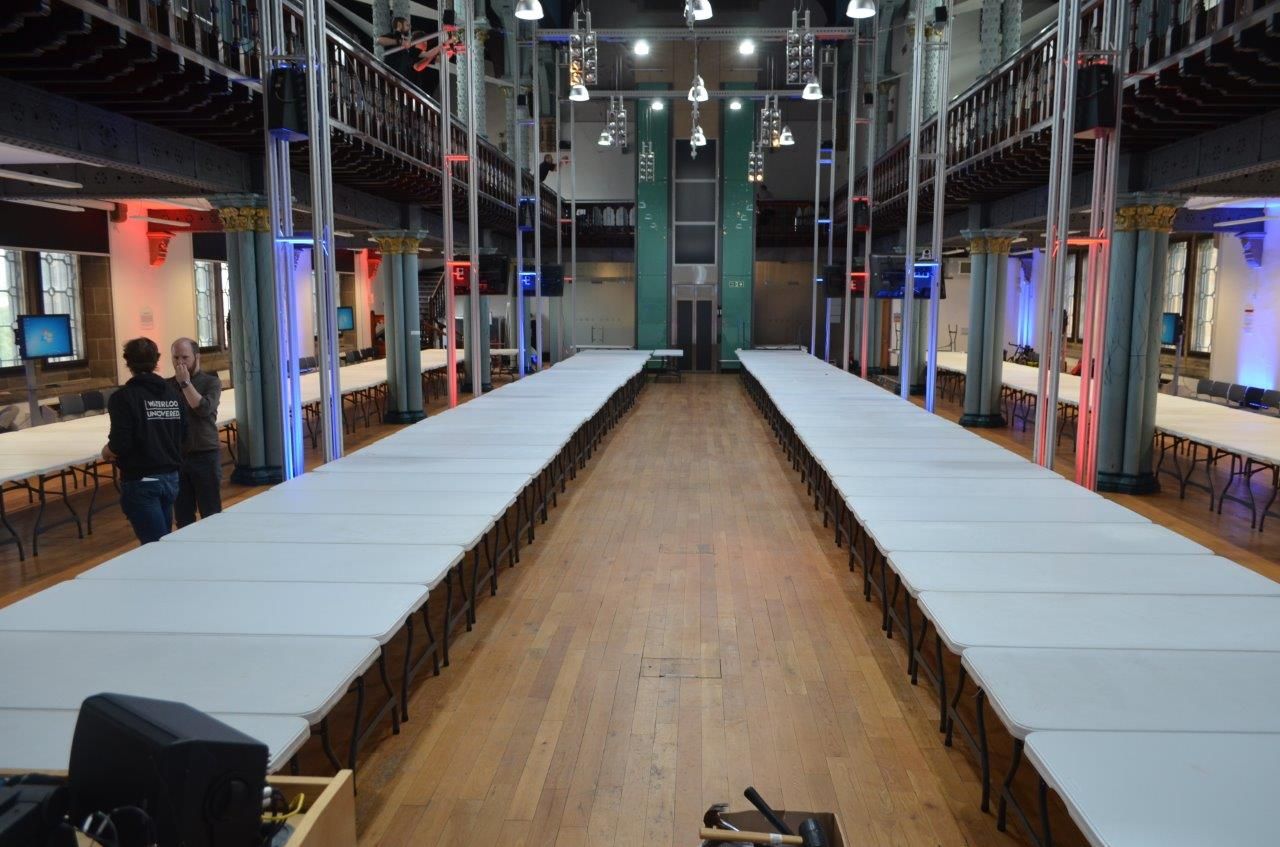 |
| 200 tables in four rows down the hall |
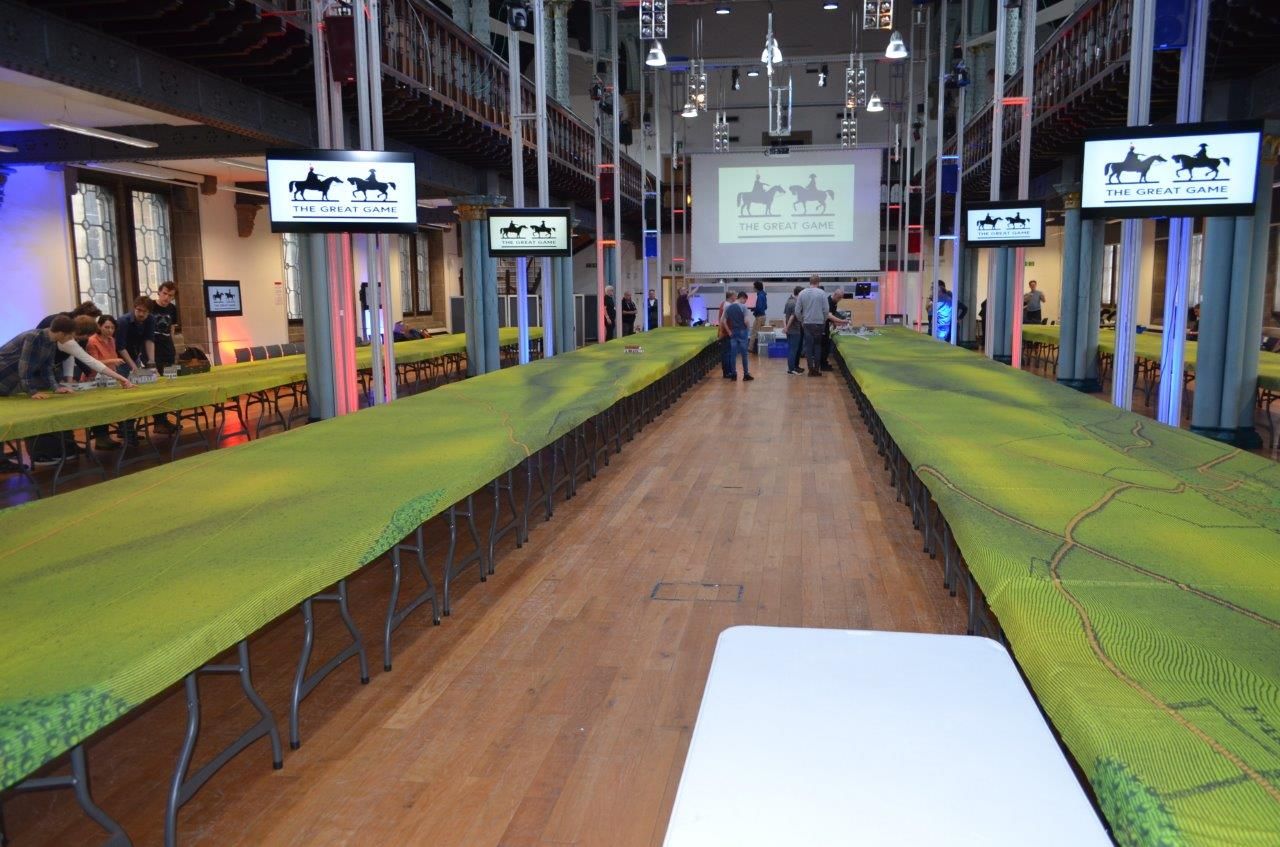 |
| The topped with a very large Battlemat |
The hall had the fortune of having a gallery upstairs so I managed to get a number of birds eye shots of the action - cheaper and safer than using a drone.
 |
| The Prussians (one of two tables) |
 |
| The French started to arrive |
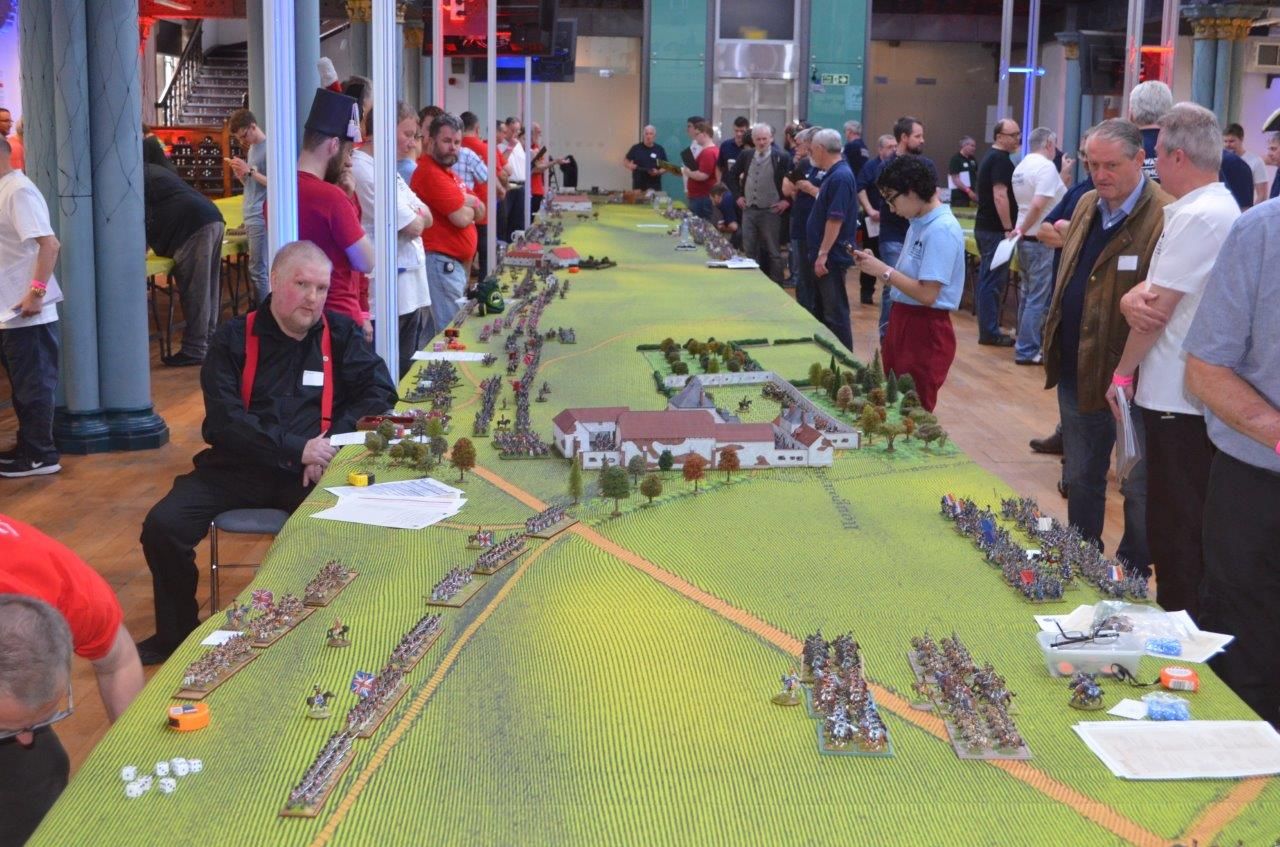 |
| There is an historical fiction writer in this picture and I think he was quite impressed that I I had read his books |
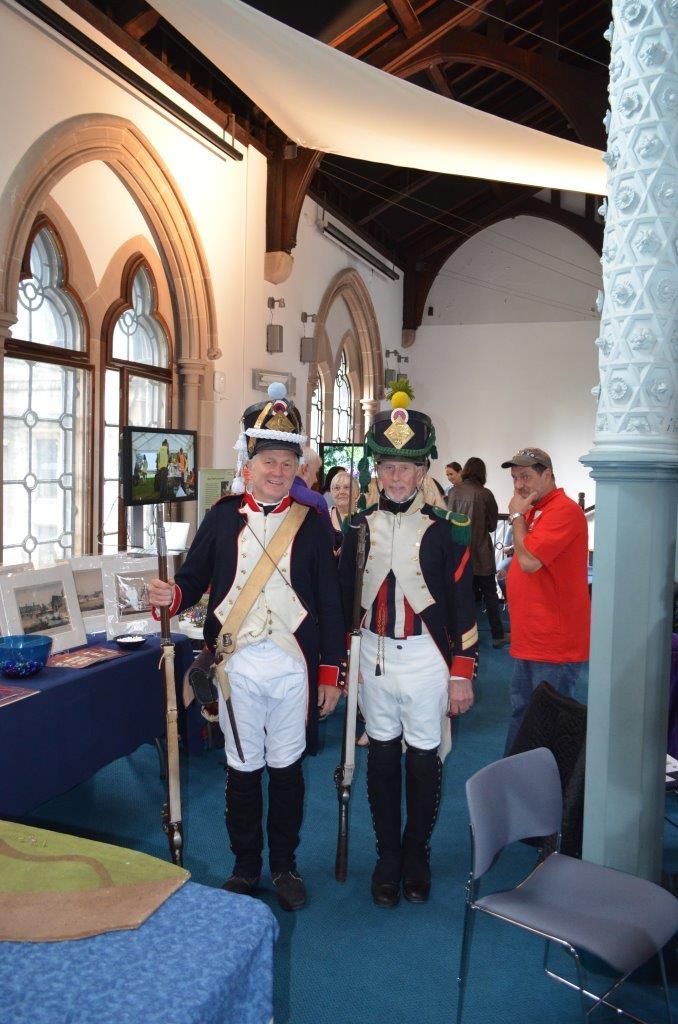 |
| The French |
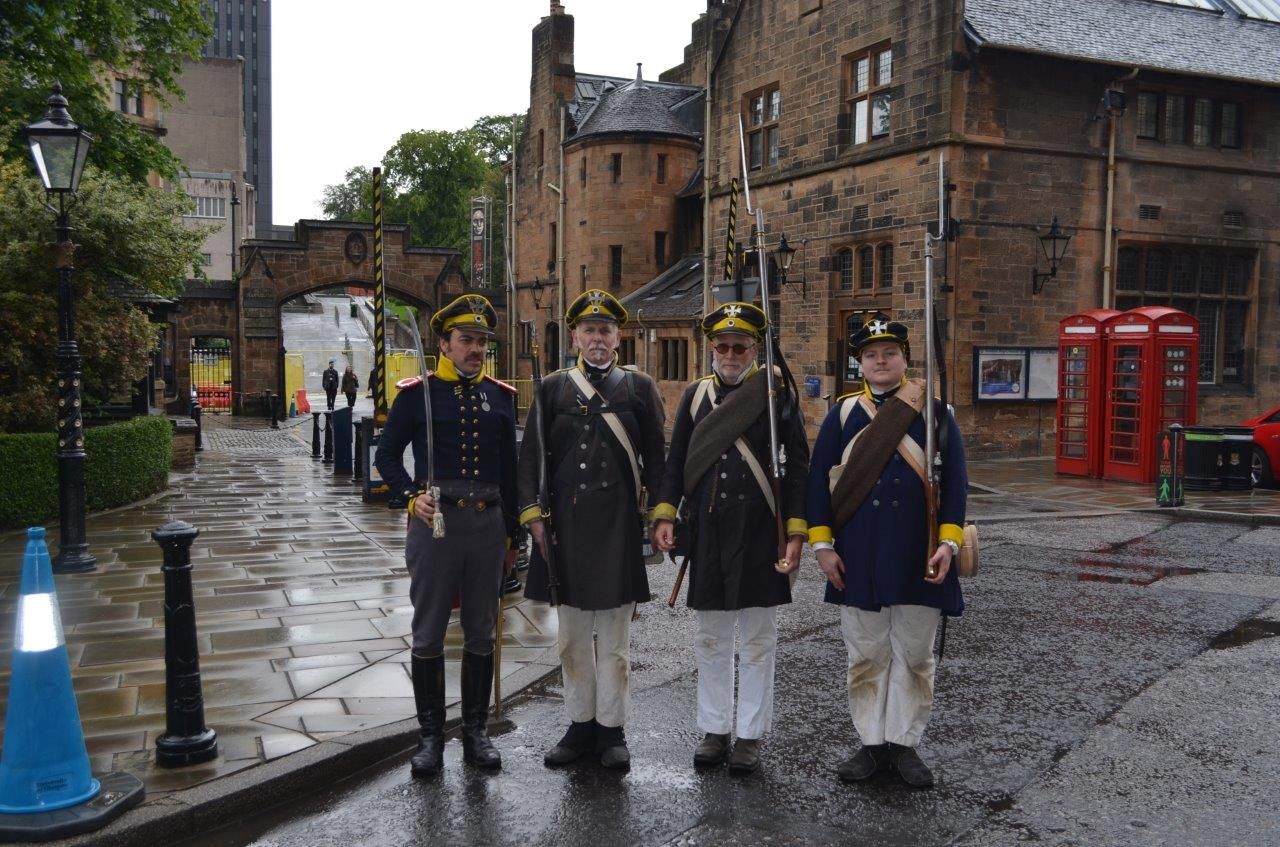 |
| The Prussians |
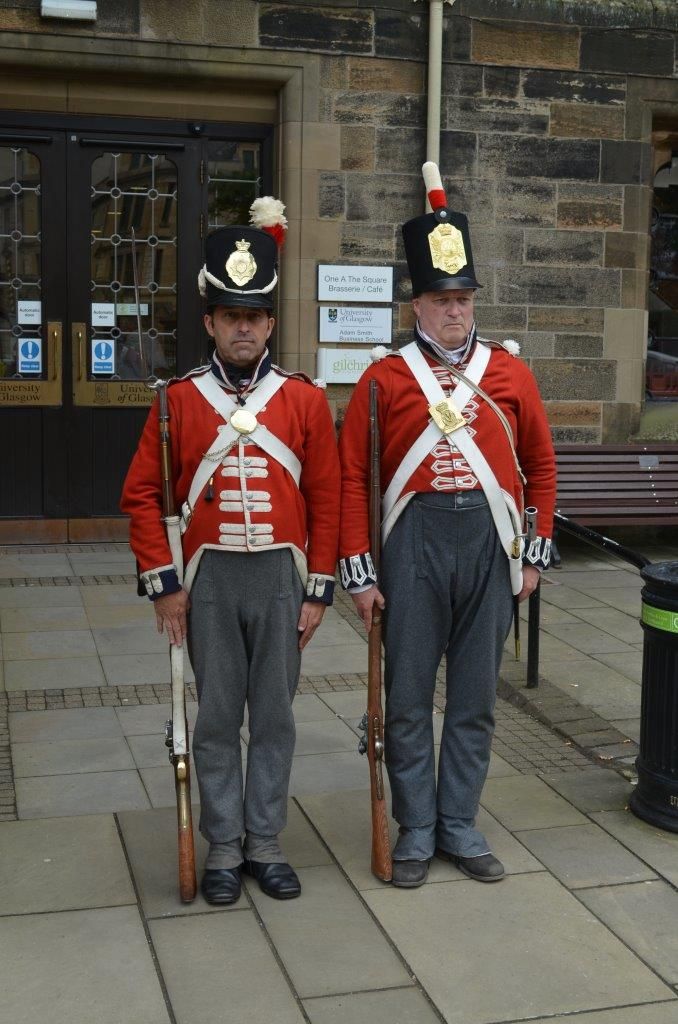 |
| The British |
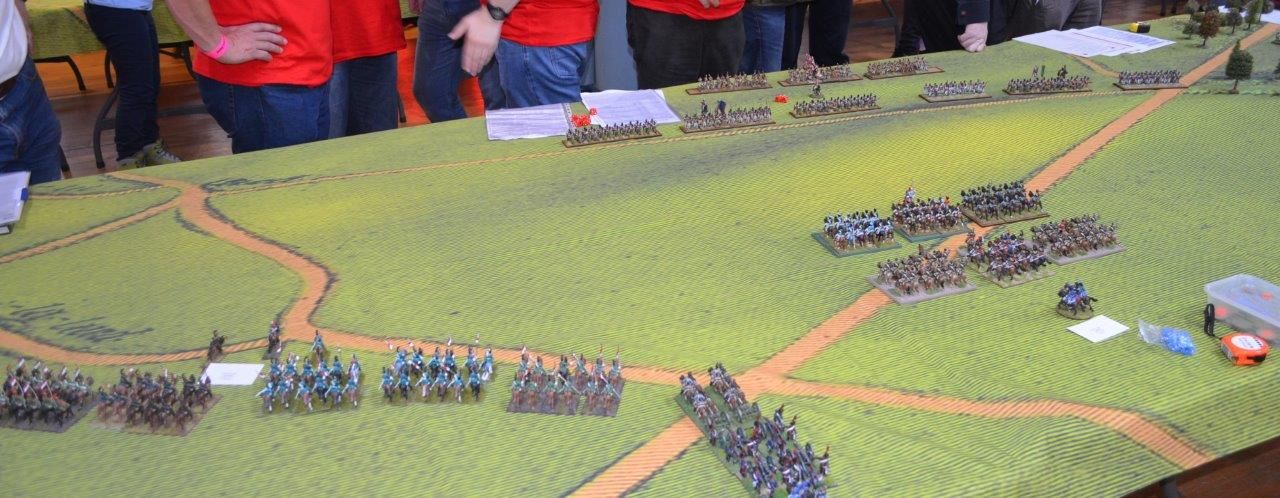 |
| Add caption |
So what could be learned next time?
Black Powder (1 or 2 take your pick) is a great set of
rules, simple to use and learn and delivers a result. However there were tweaks
in the Great Game that caused some issues. The biggest of these was to ignore
the core rule of Shaken brigades. As the rules stand once a brigade has either
lost or had shaken more than 50% of its forces that unit effectively becomes
useless. In the great game this was effectively ignored and only once the
brigade was down to one effective unit would it retire from the field. This was
done to ensure that players were kept in the game. Sadly it ended up ensuring
an overpacked centre with little room for movement in an attritional battle for
frontage. Recommendation keep the rule as it is written and get players to
recognise that there commands could evaporate quite quickly. It’s the taking
part that counts.
Secondly the distances on the table were stretched and the
ruleset really struggled to cope in key areas. The actual battlefield is no
more than three miles across and a man on a horse could cover this in less than
20 minutes. In an ideal world troops deployed on the far left should have been
able to strategically move across the rear tables to the far right and vice
versa. This was not considered and we ended up with a perverse scenario that it
would have taken more than two days of gaming to order a unit successfully from
east to west. It was less of an issue when attacking to the front but it did
mean very little tactical movement in the game. Effectively you could only attack
what was in front of you. Combine this with point 1 above and you end up with
stalemate. When the French broke through into the Allied rear on Sunday morning
they had no opportunity to exploit their success with reinforcements.
Unfortunately the gaming battlefield was completely flat but
as any proponent of Waterloo would know it is an undulating battlefield with
hills, crests, valleys and rises. These were printed on the map but extremely
difficult to read and quite rightly the judging team decided to forego these
features. We did however reach a compromise on where the key British ridge
would feature – the edge of one table. This worked in principal but might have
been better if the map was slid further to the south with the ridge occupying
the central part of the second row of tables. This could have been formed from
some simple sheets of polystyrene for little cost and place under the mat.
Sliding the map south would have also created ore action on table three
(hougoumont would have been on this table).
Finally the biggest weapon in Napoleons armoury was
hamstrung by the rules. At no pint could he have built an effective grand
battery. The 60” range given in Black Powder does not reflect the real ranges
of the artillery especially when compared to the 18unch ranch range of muskets.
For such a table I would have argued an increase in artillery ranges.
Did these issues impact the game – in part yes – despite
arriving early the Prussians could never bring their full weight to bear on the
French and with no rapid deployment of reserves commanders could only really
react to what was happening in front of them.
That said, it was a fine game to watch and I know all participants had a great time.
Once again a big thank you to the organisers...
Until next time..
That said, it was a fine game to watch and I know all participants had a great time.
Once again a big thank you to the organisers...
Until next time..
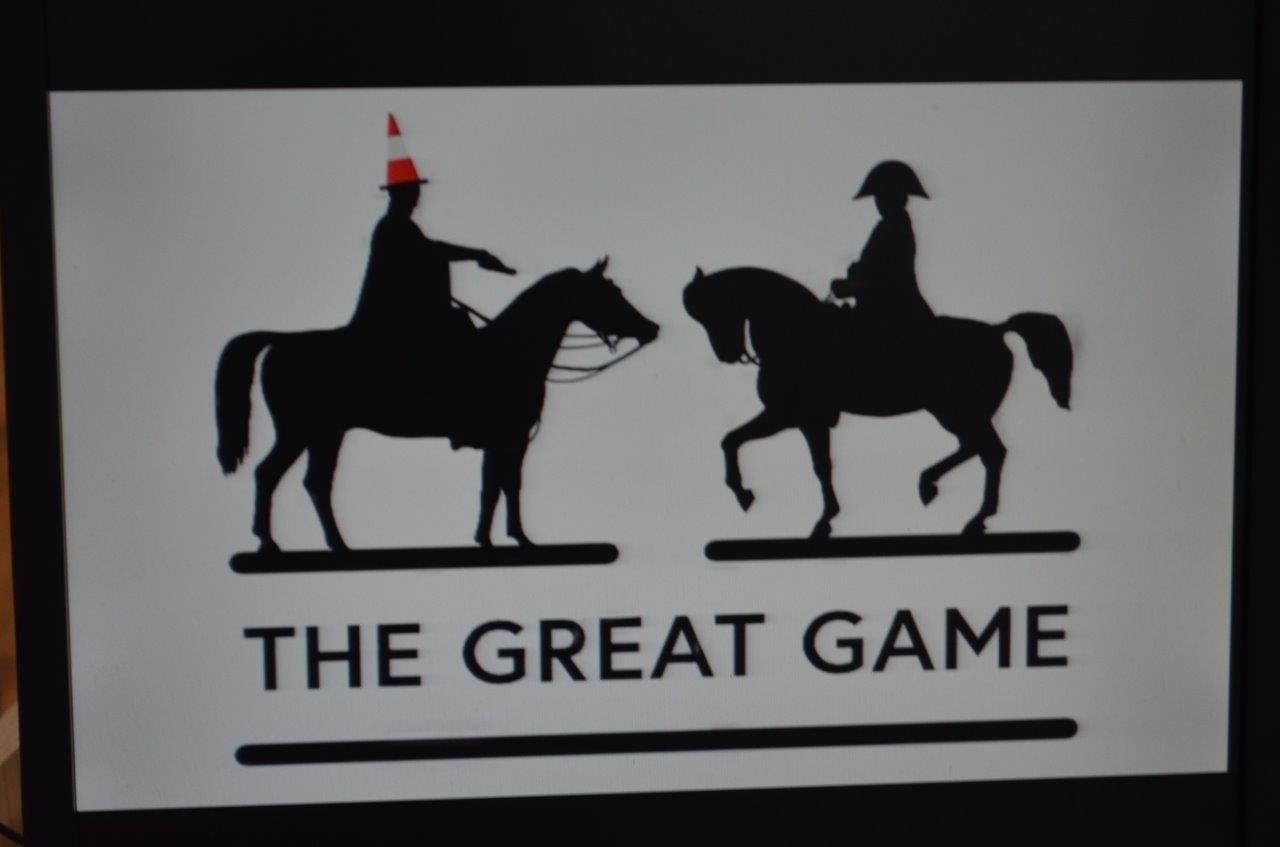
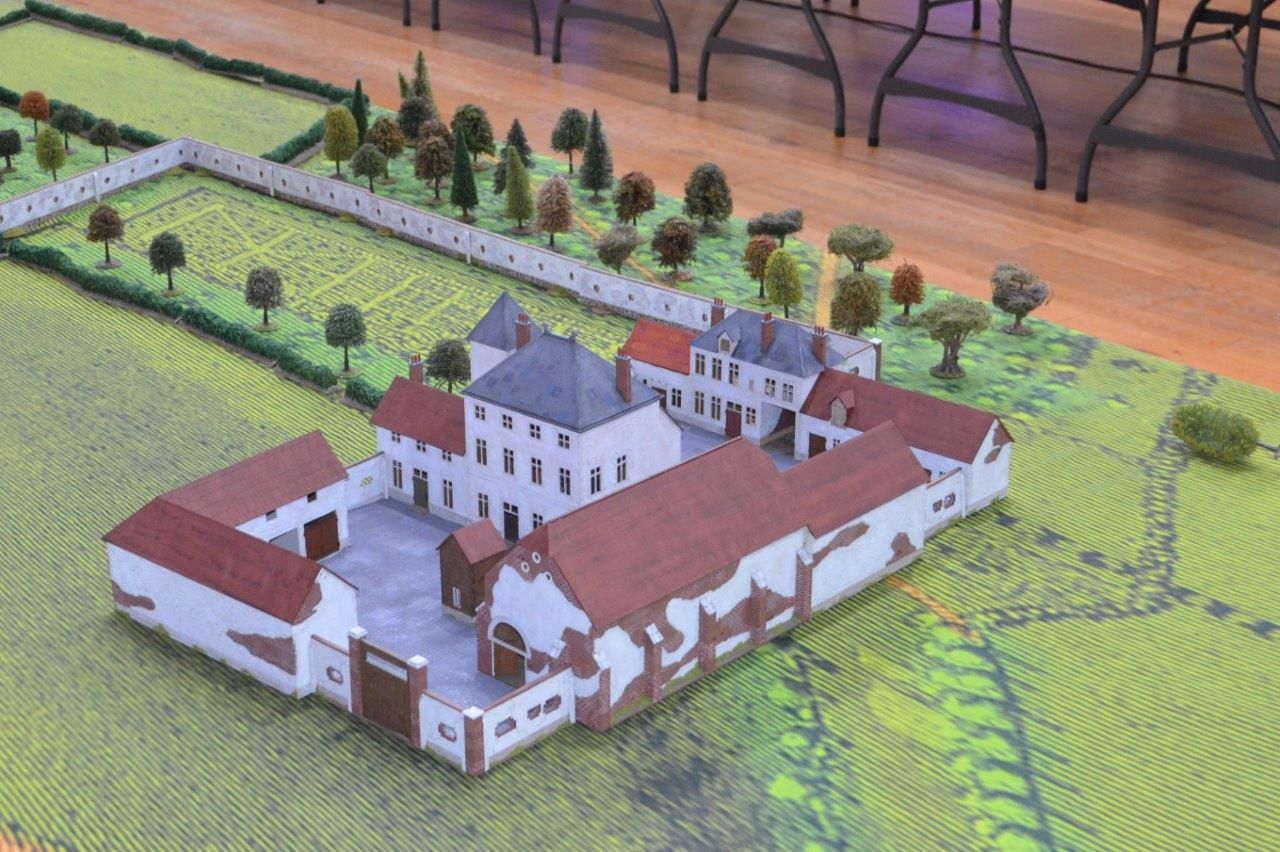
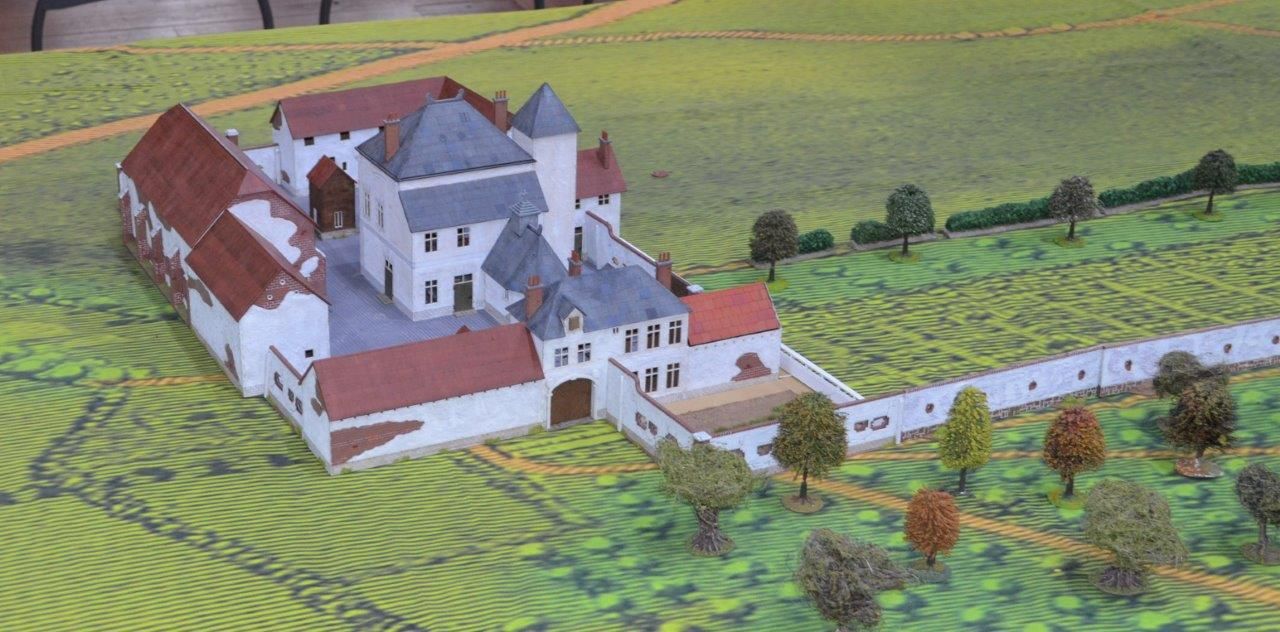

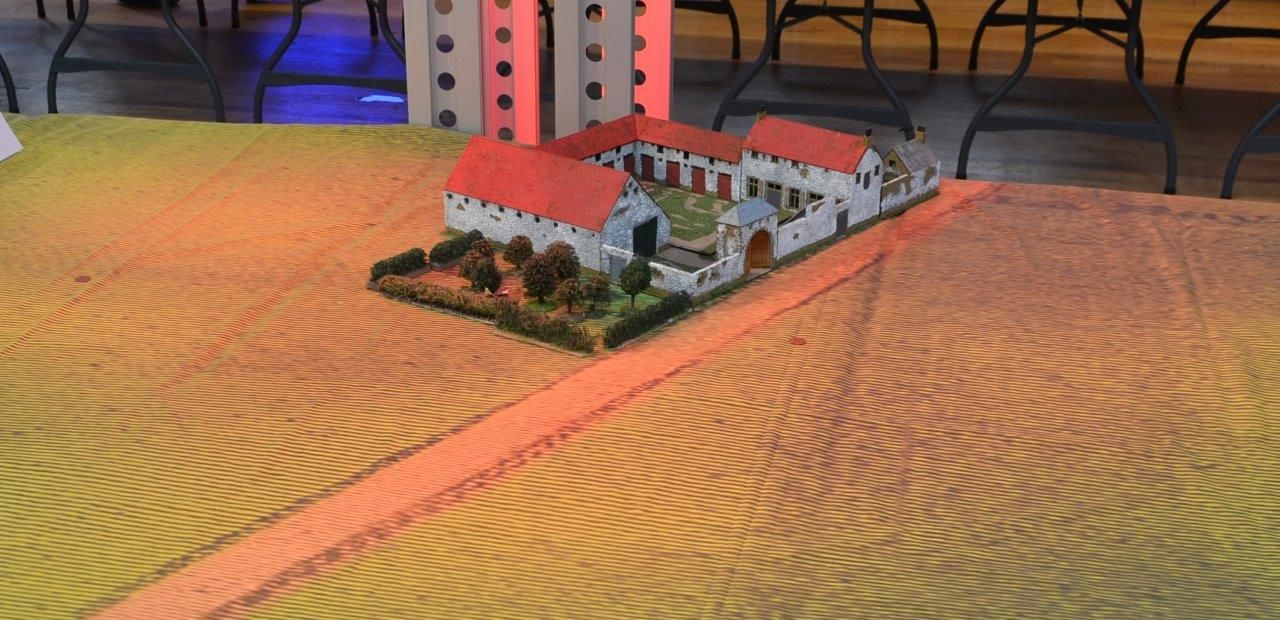
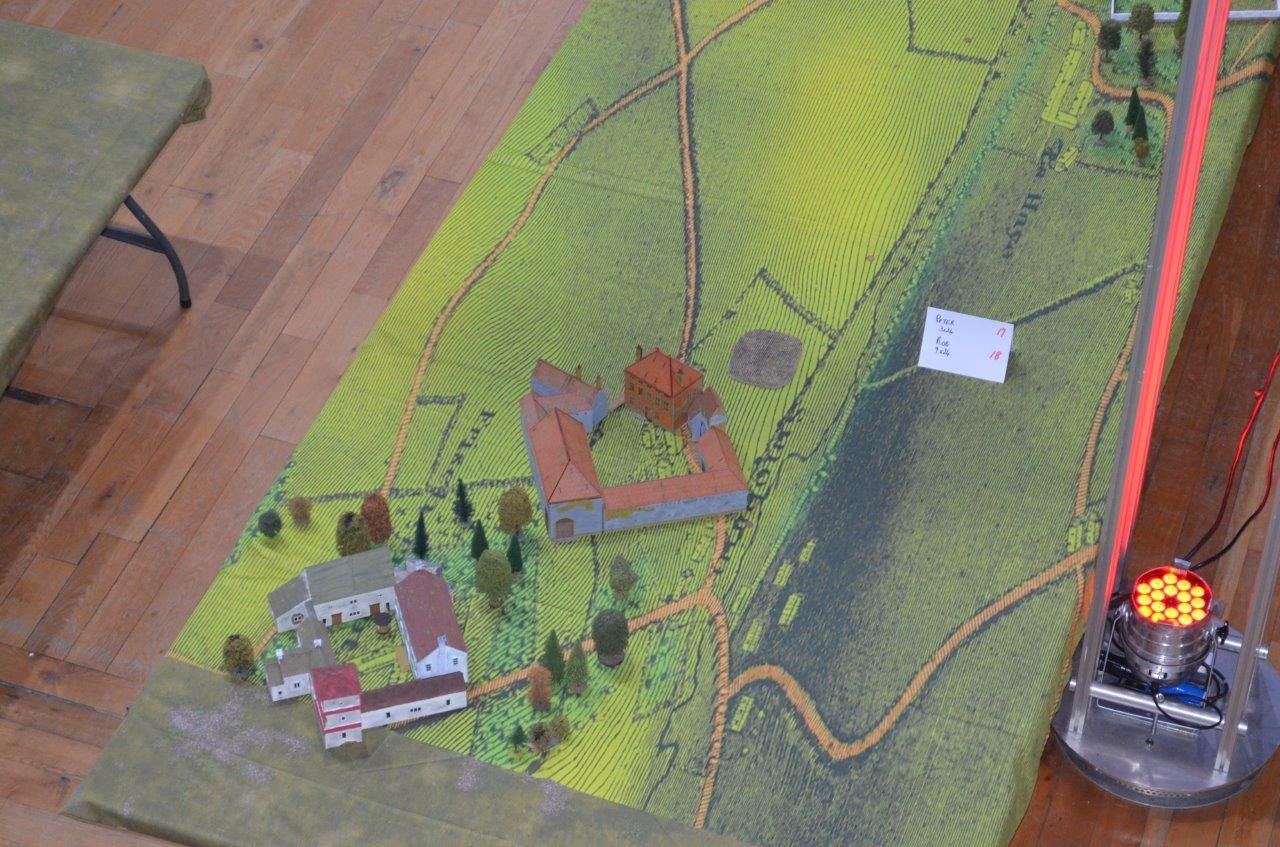
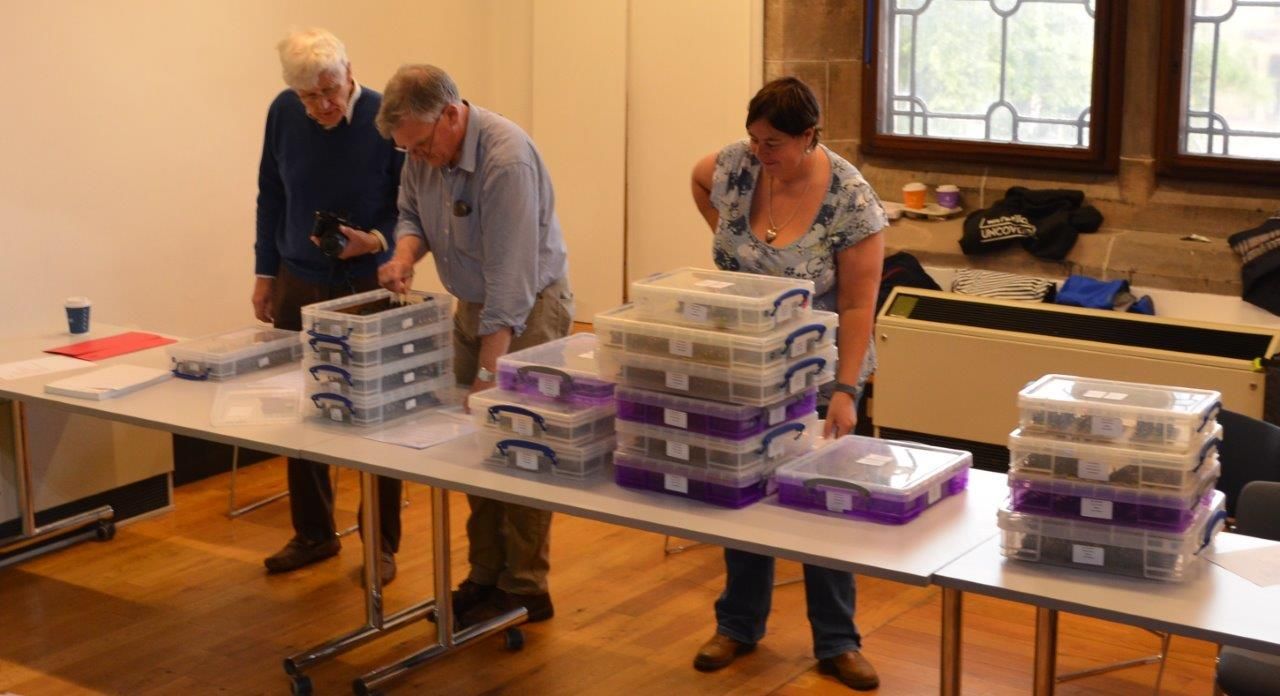
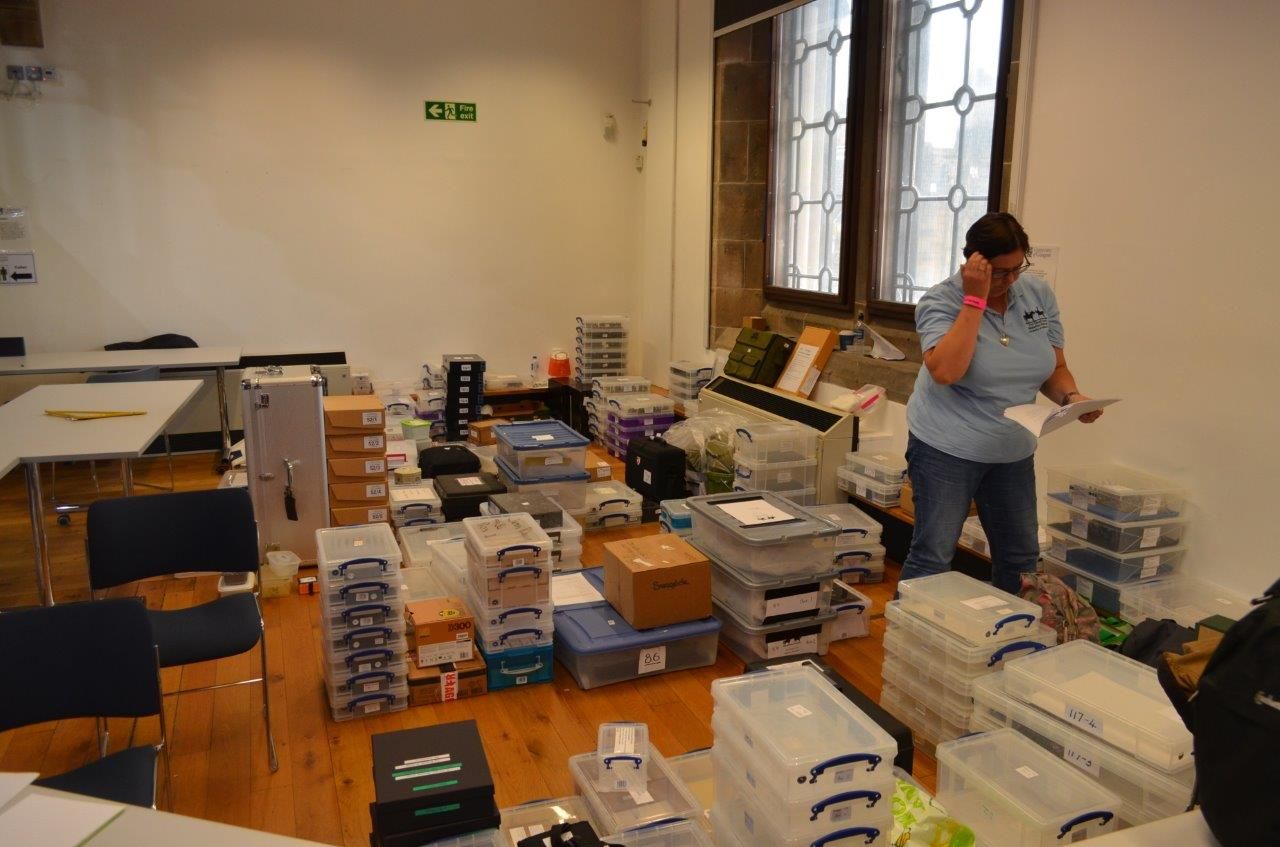
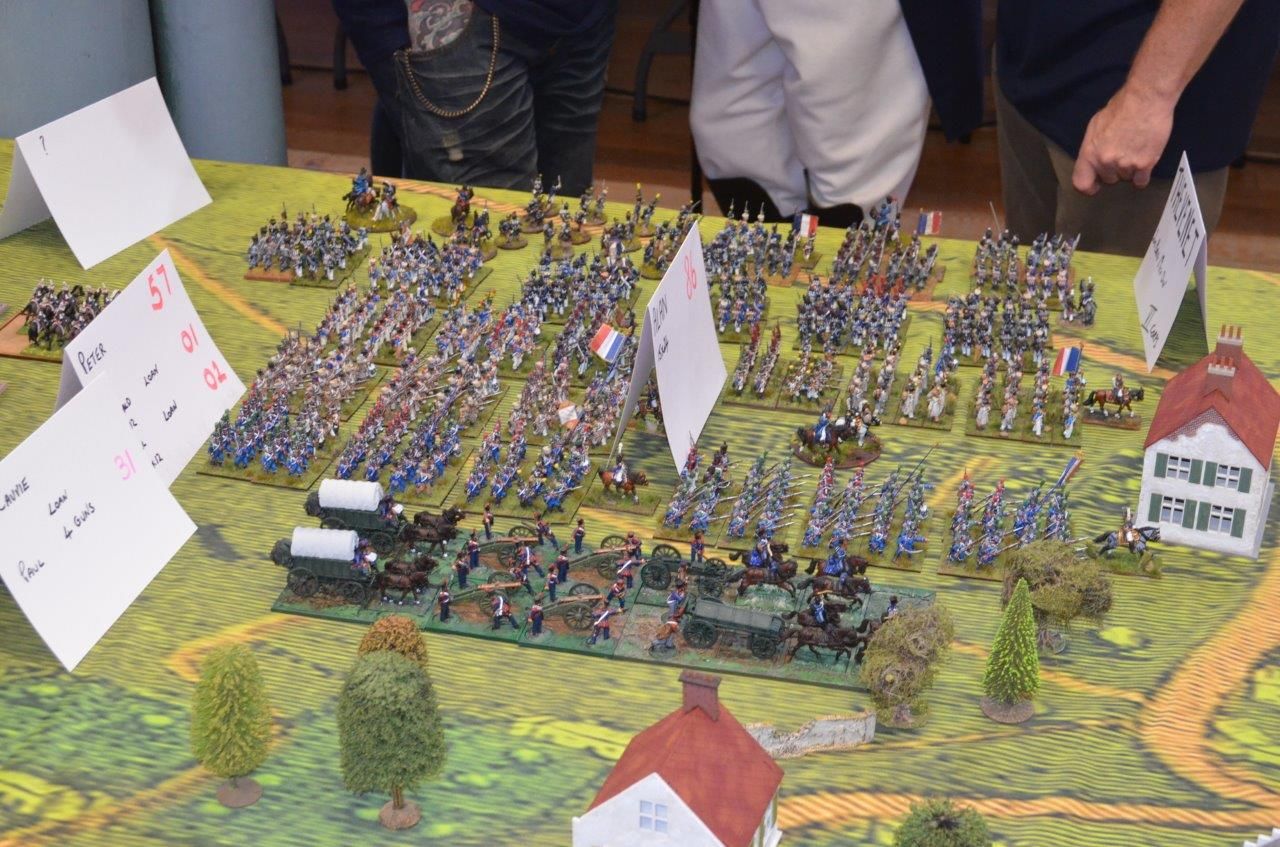
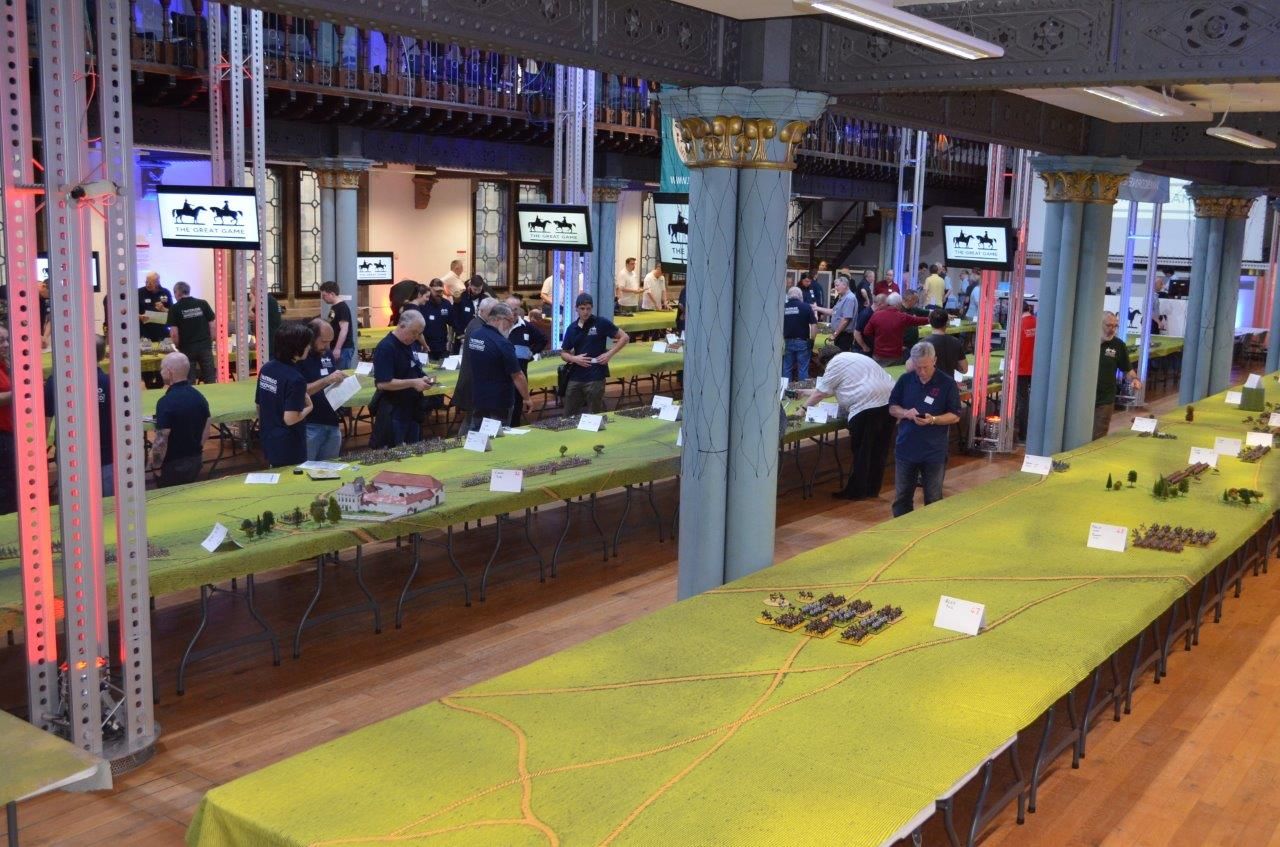
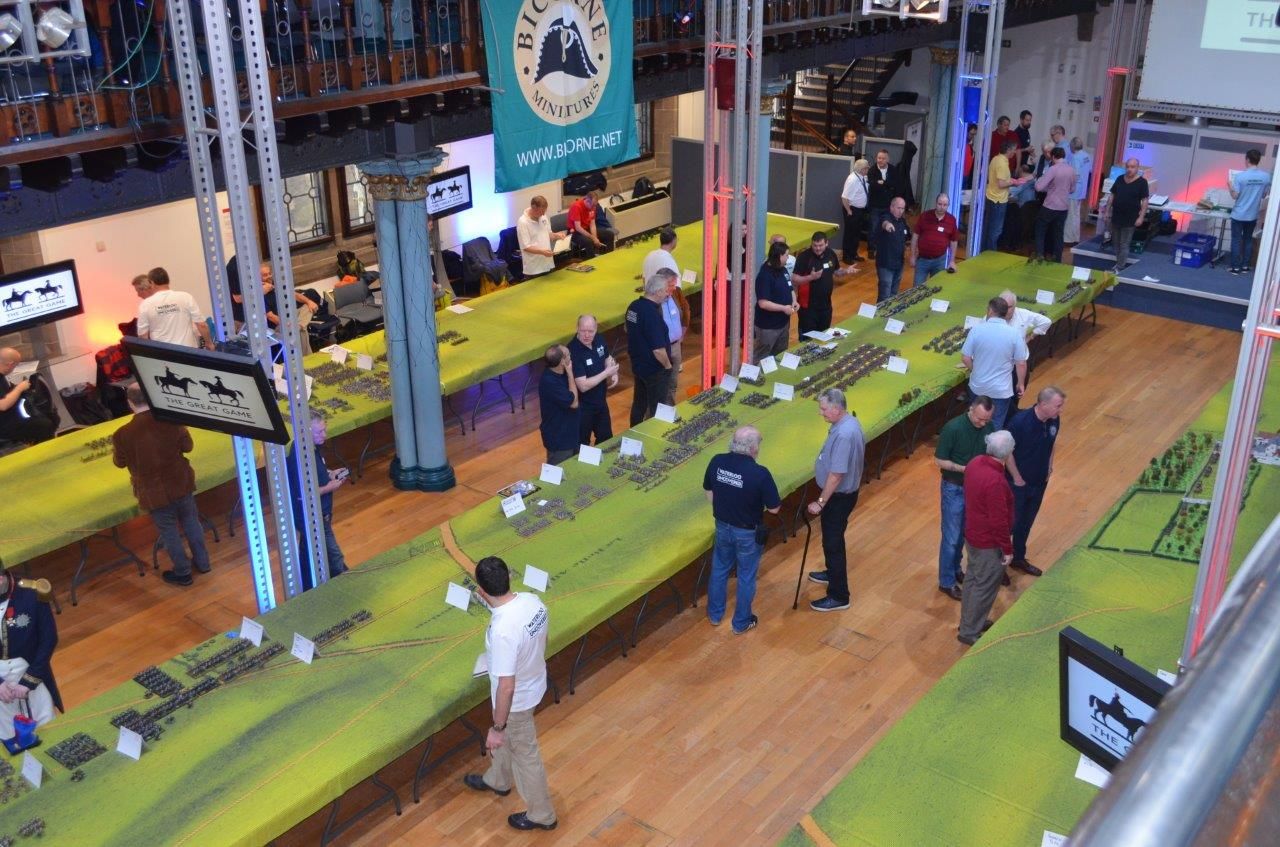
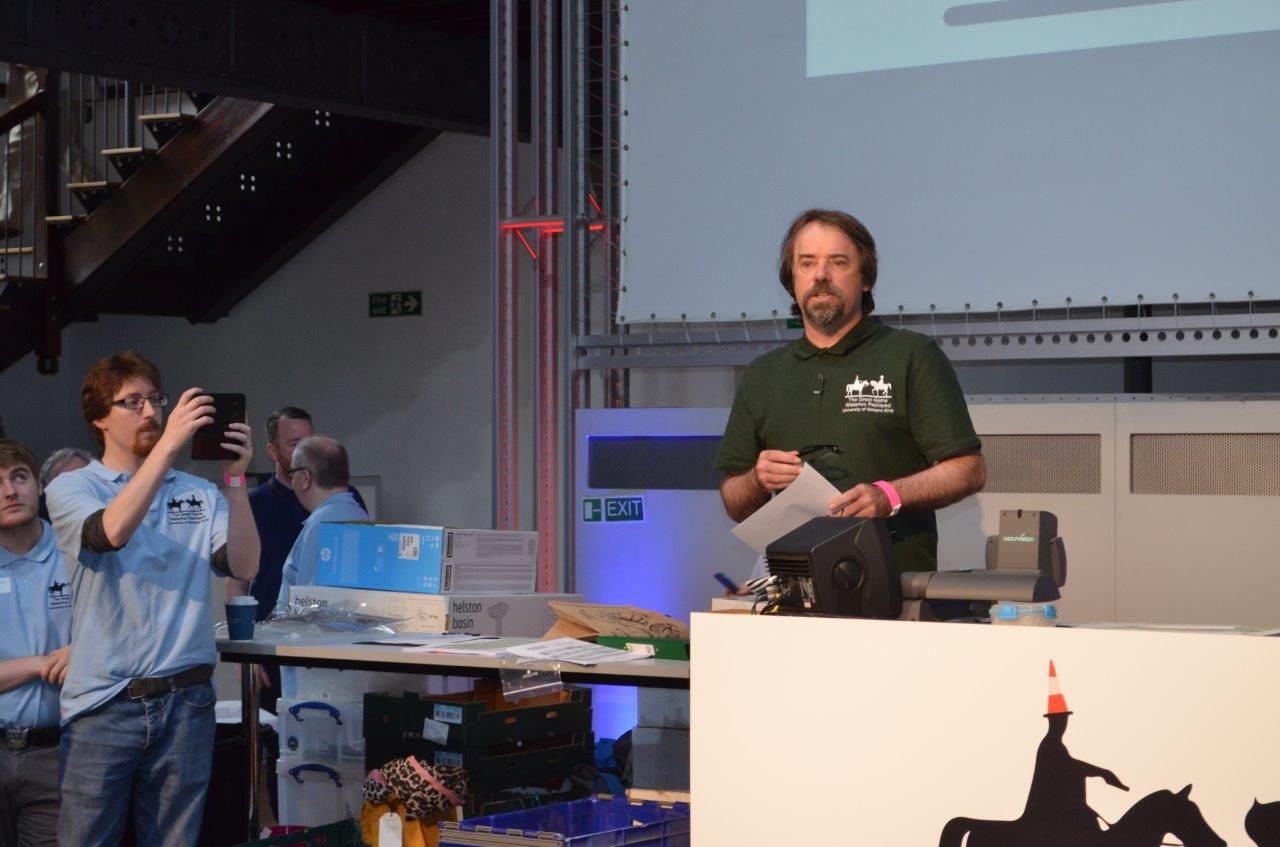


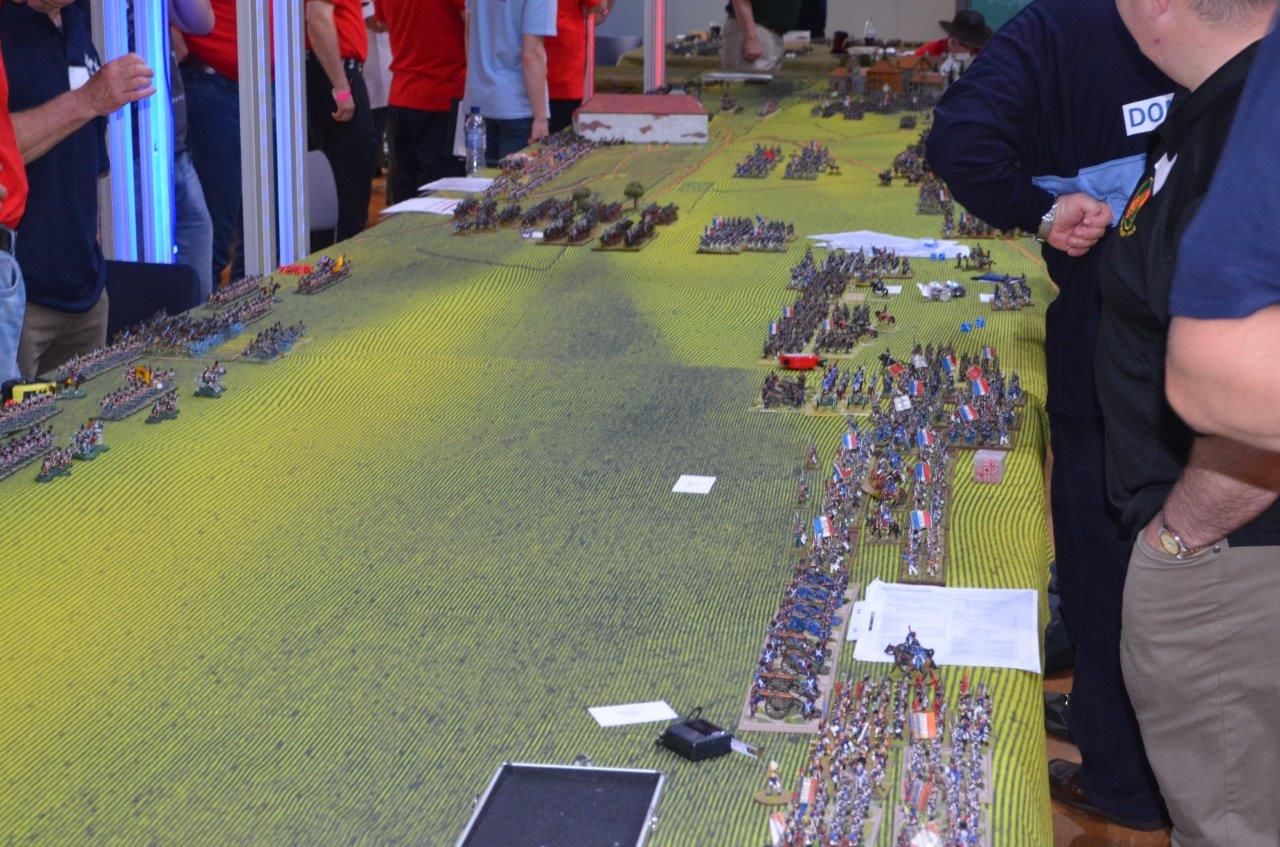

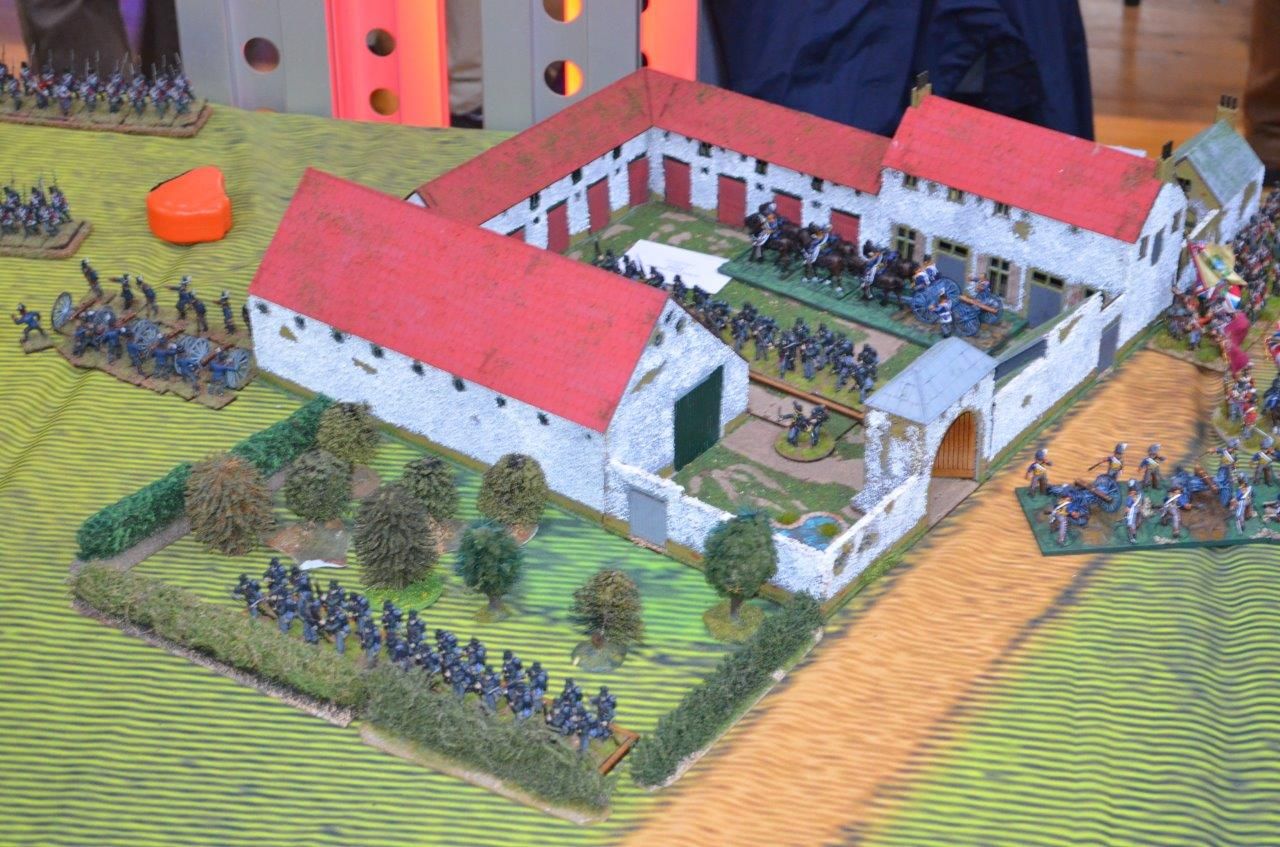



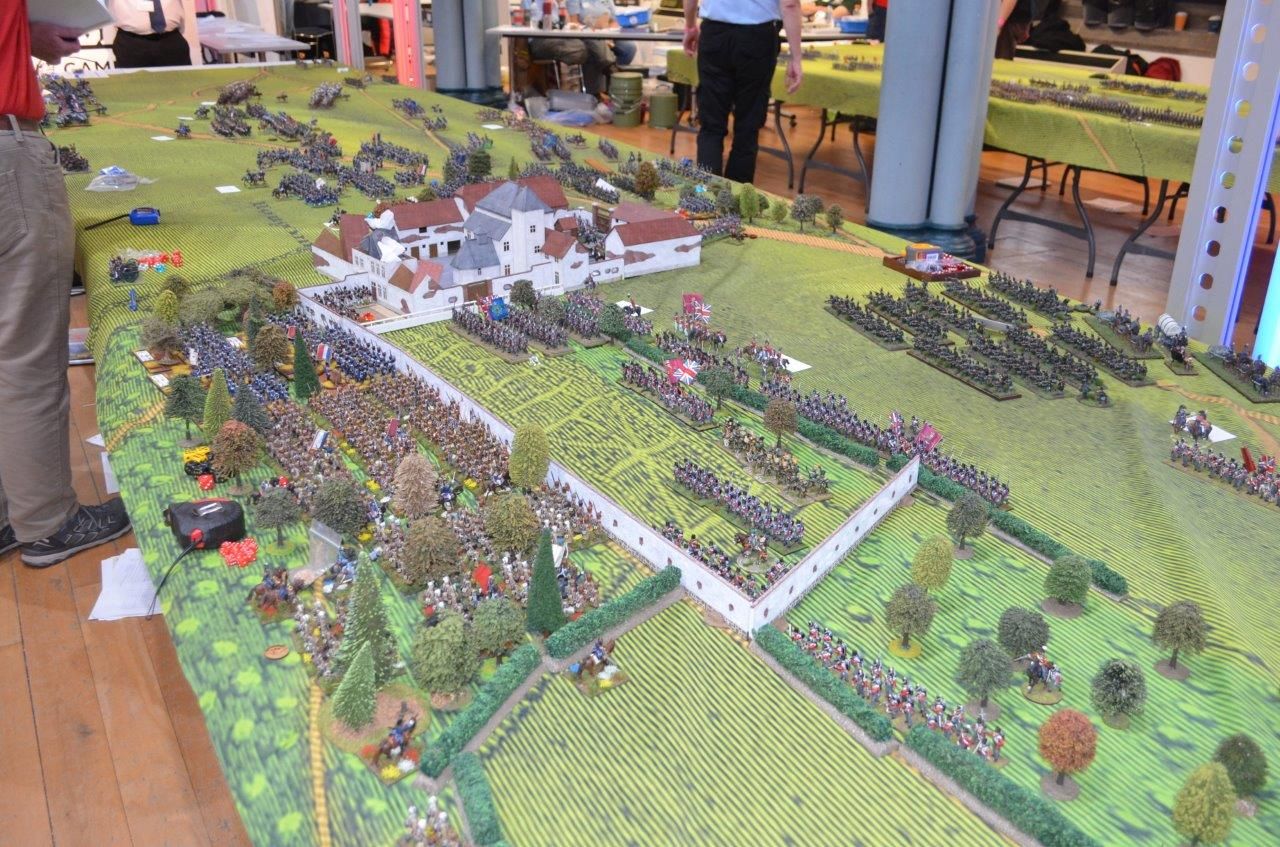

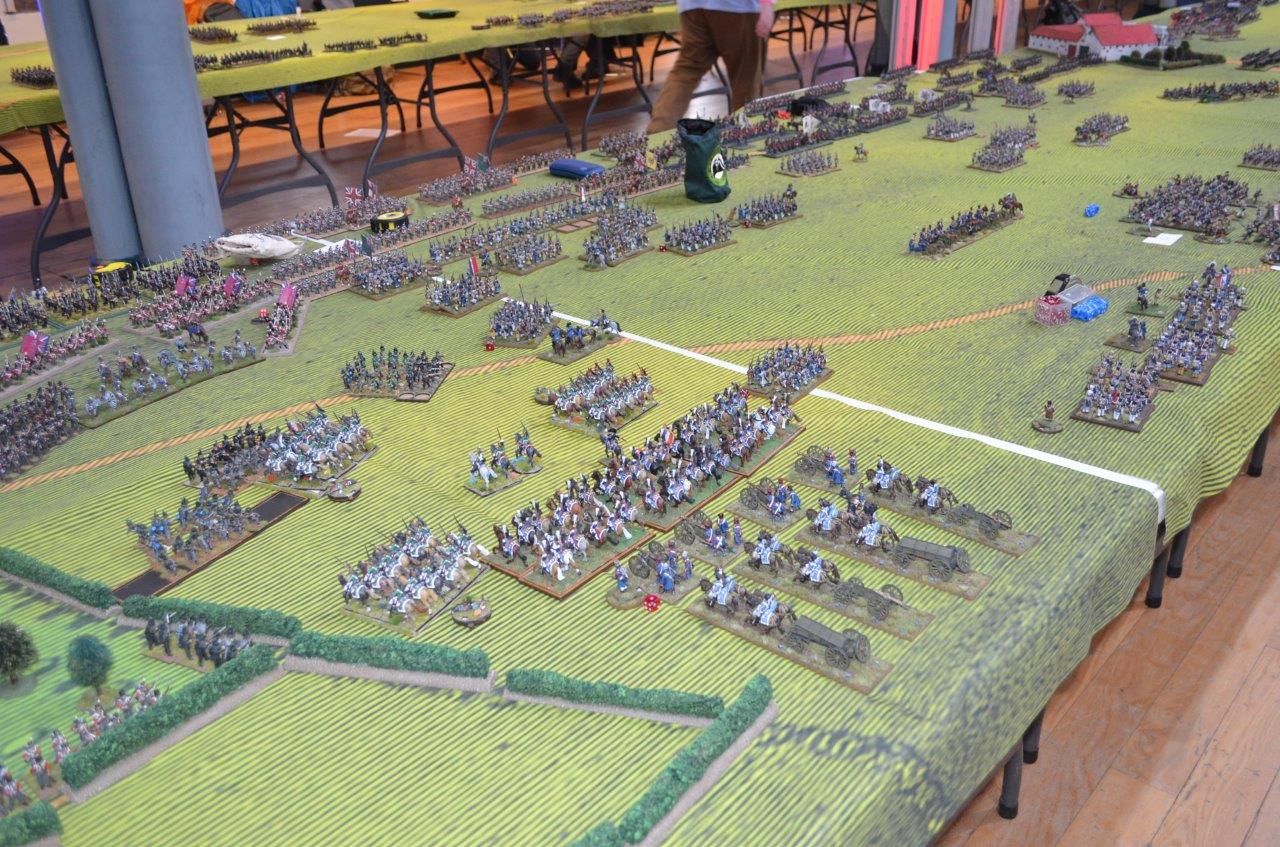
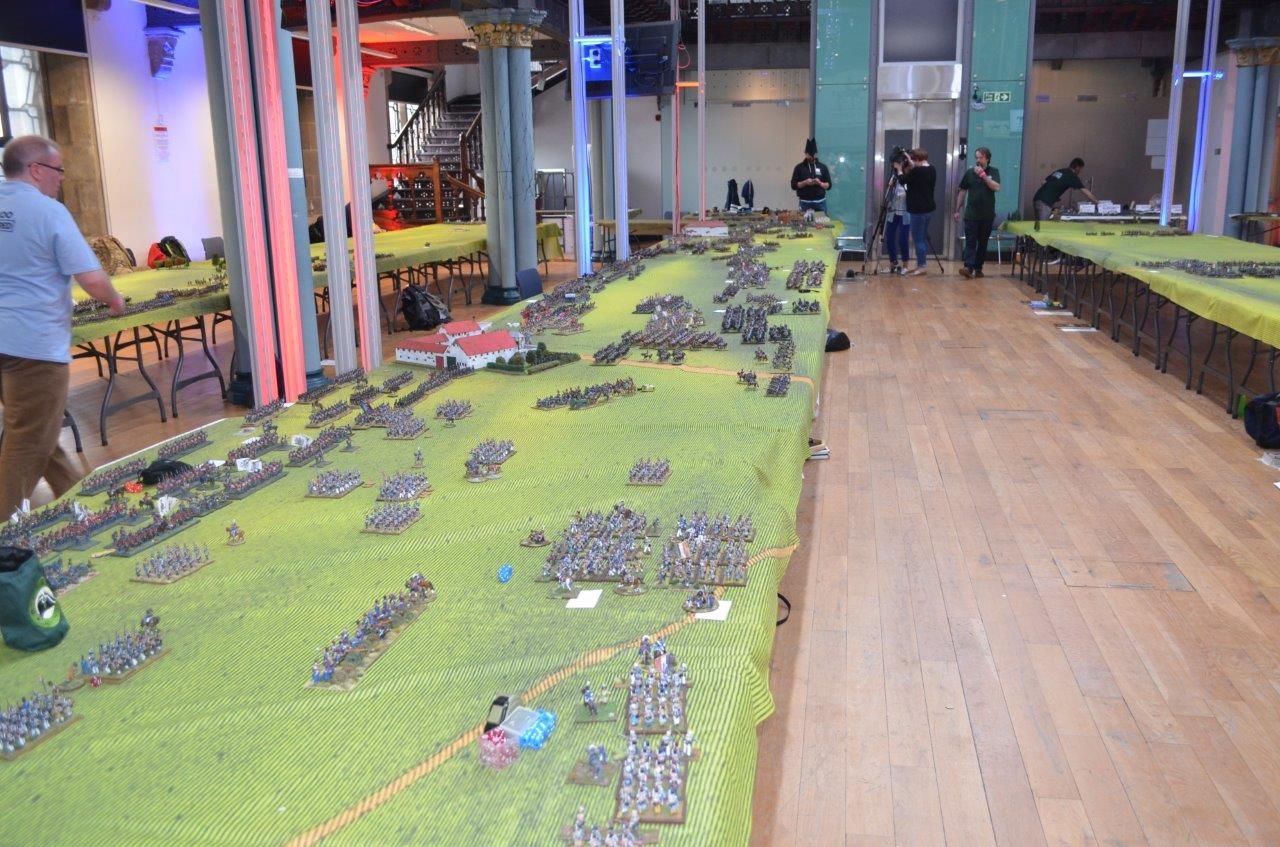
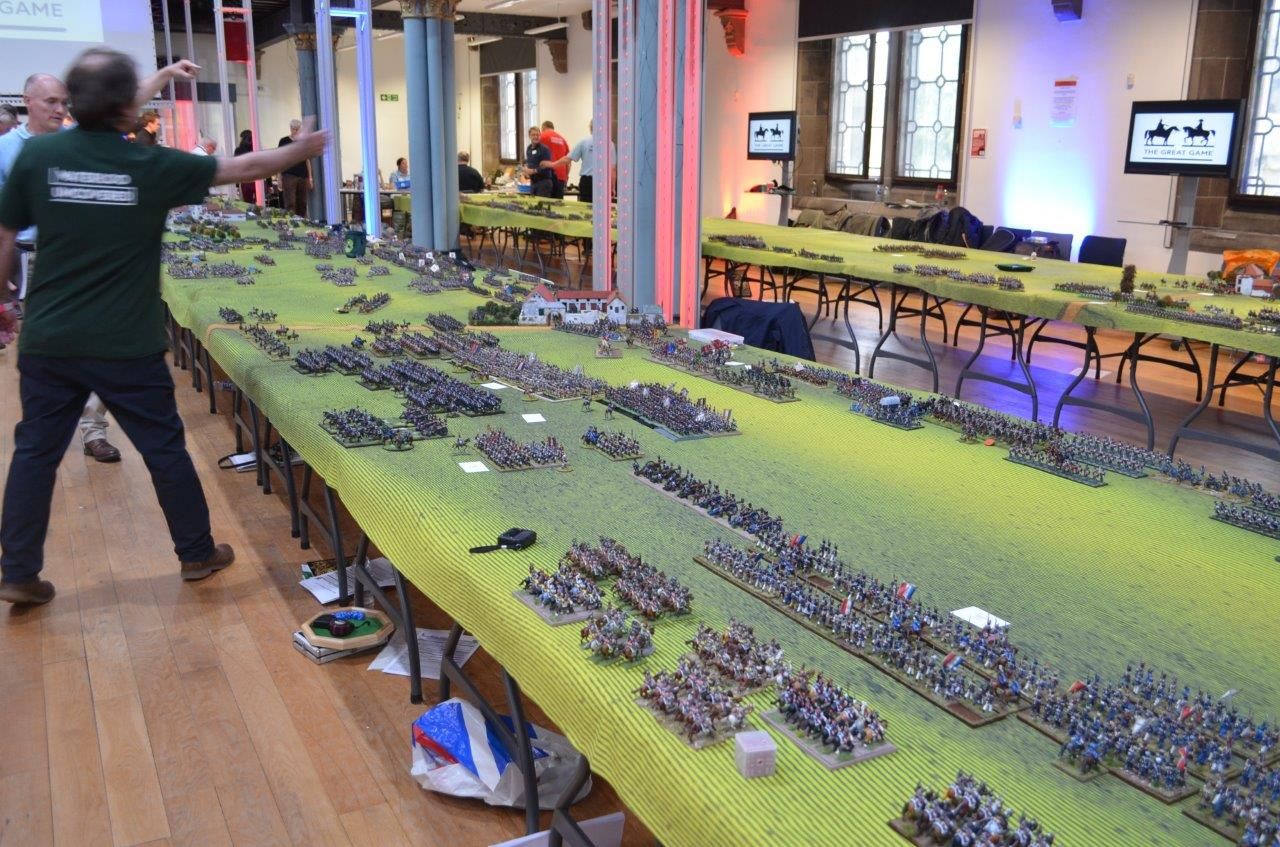
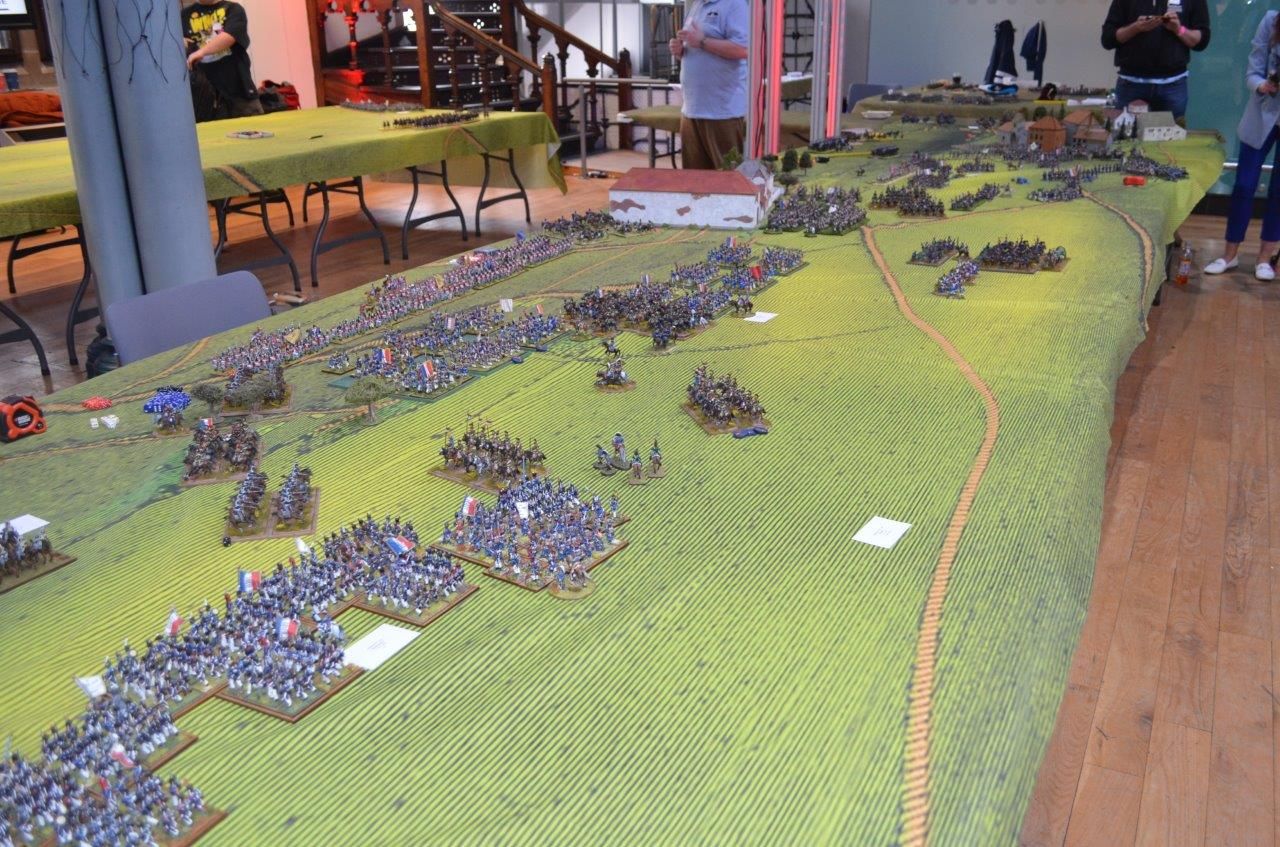
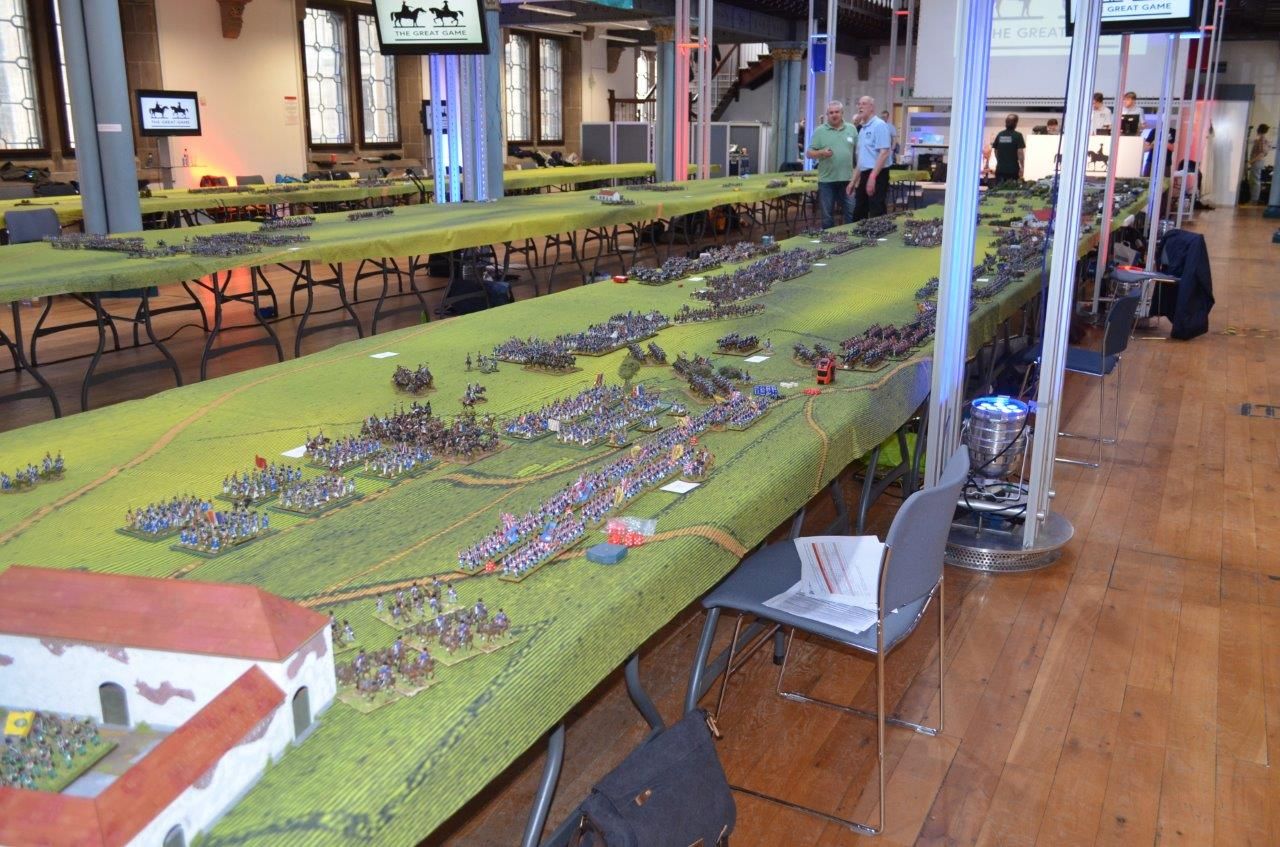

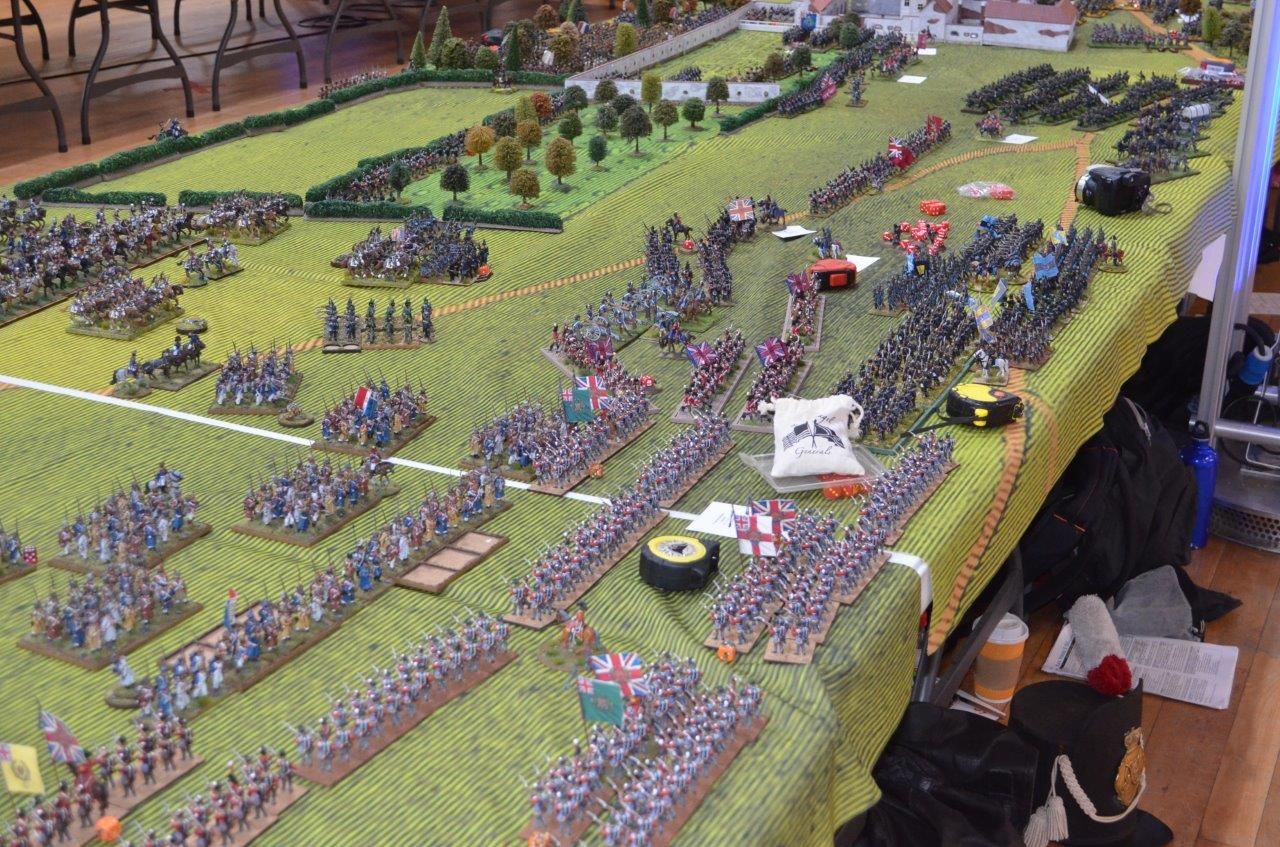
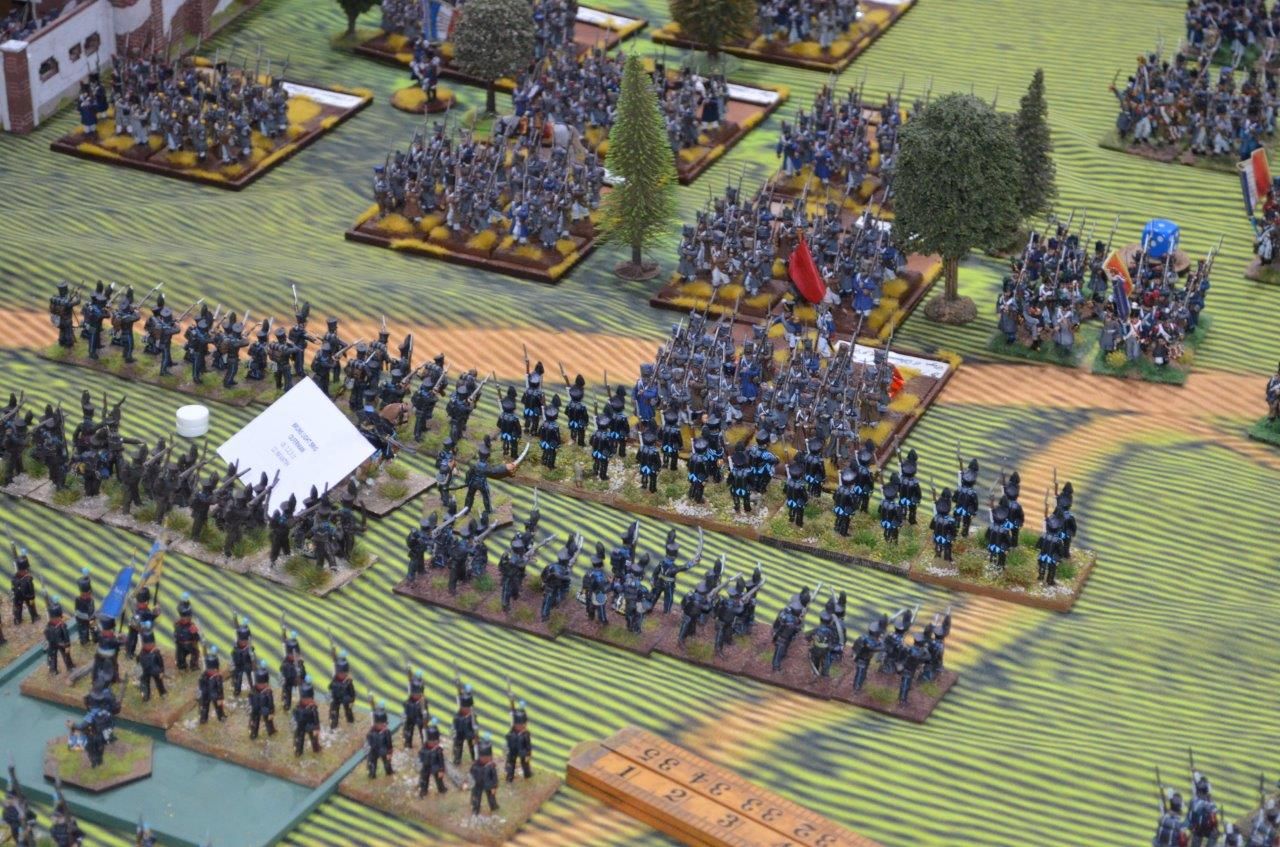

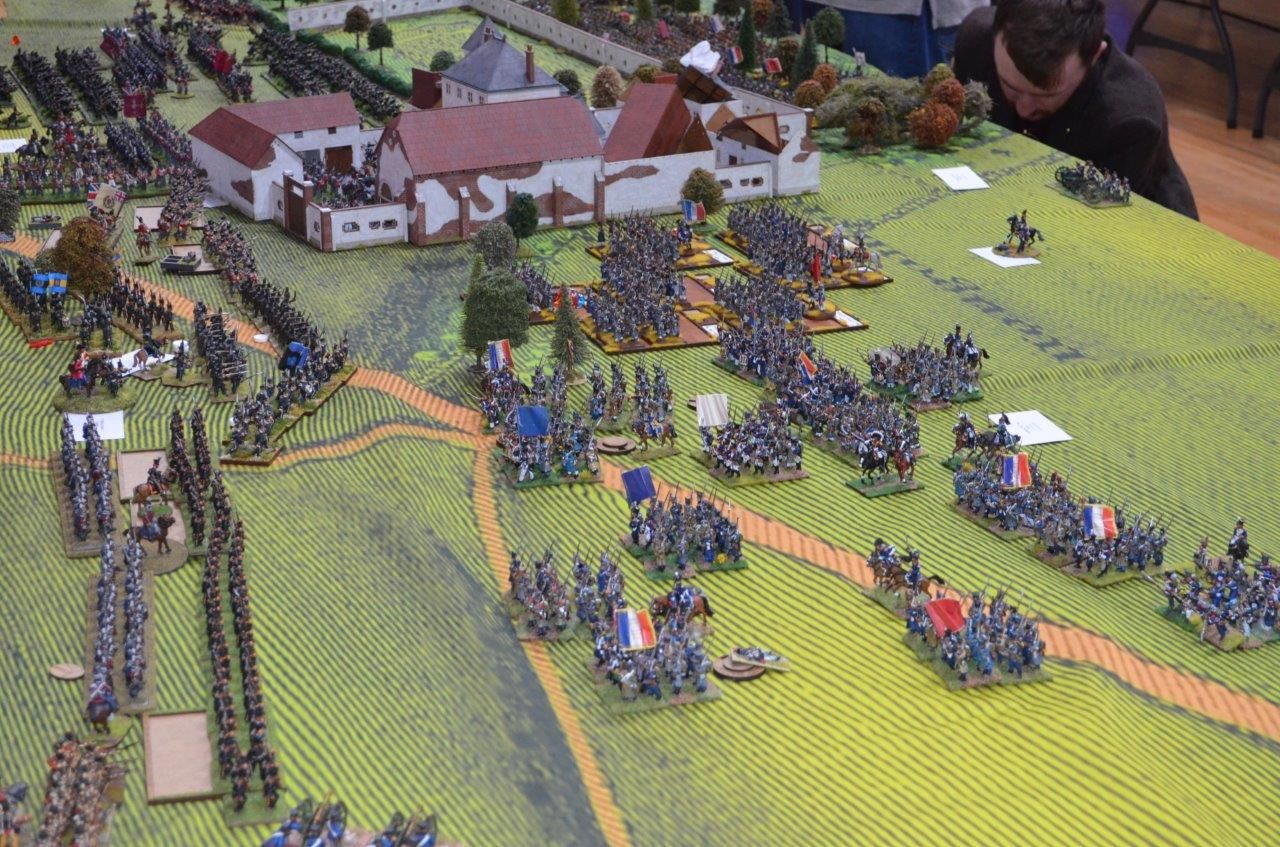
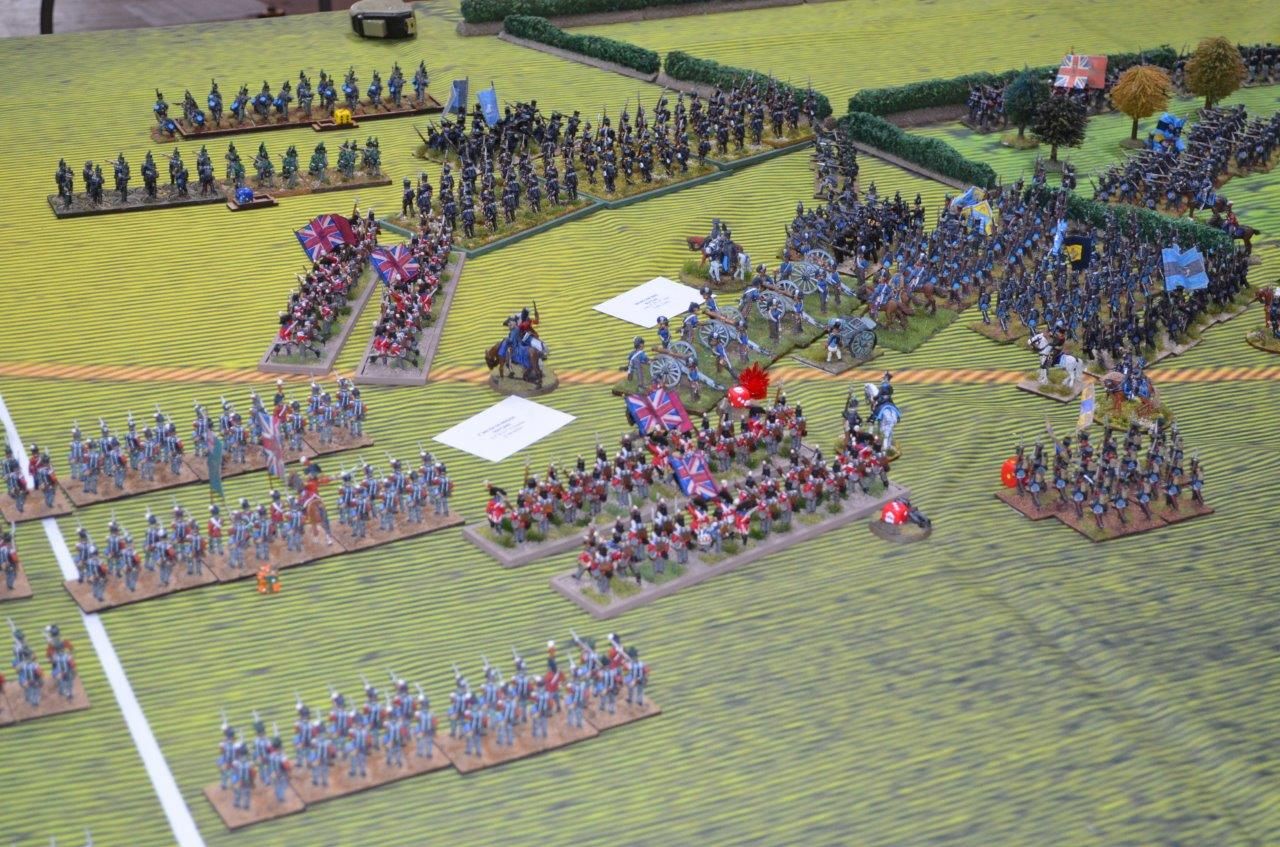
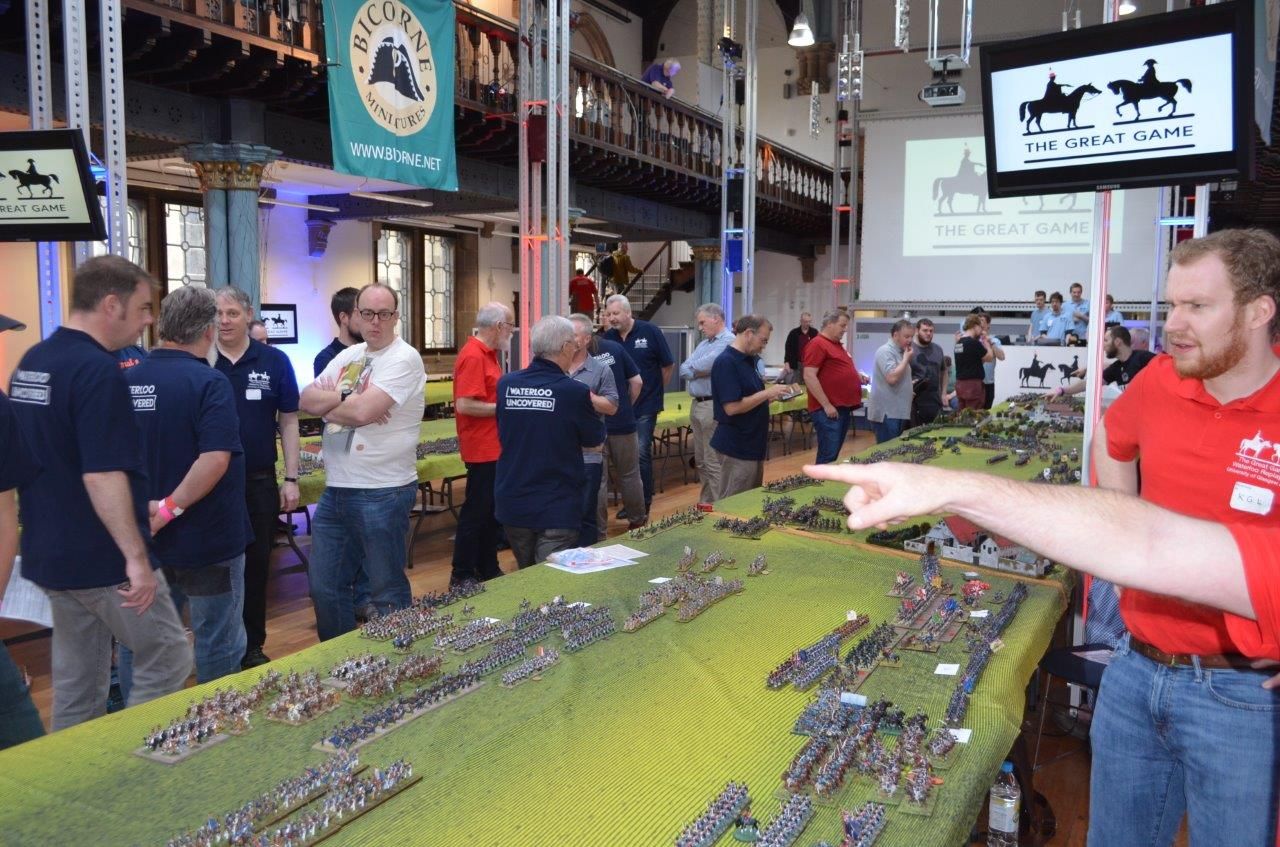
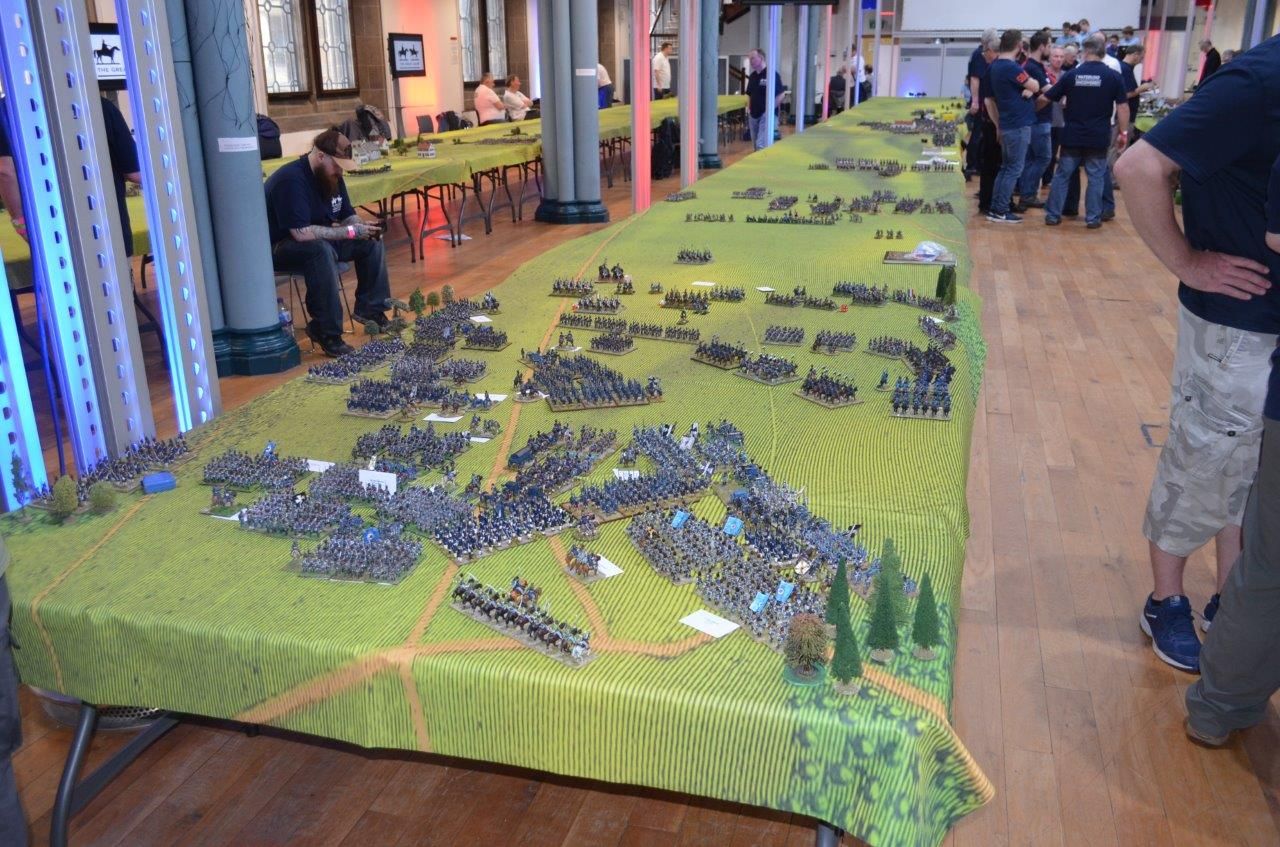
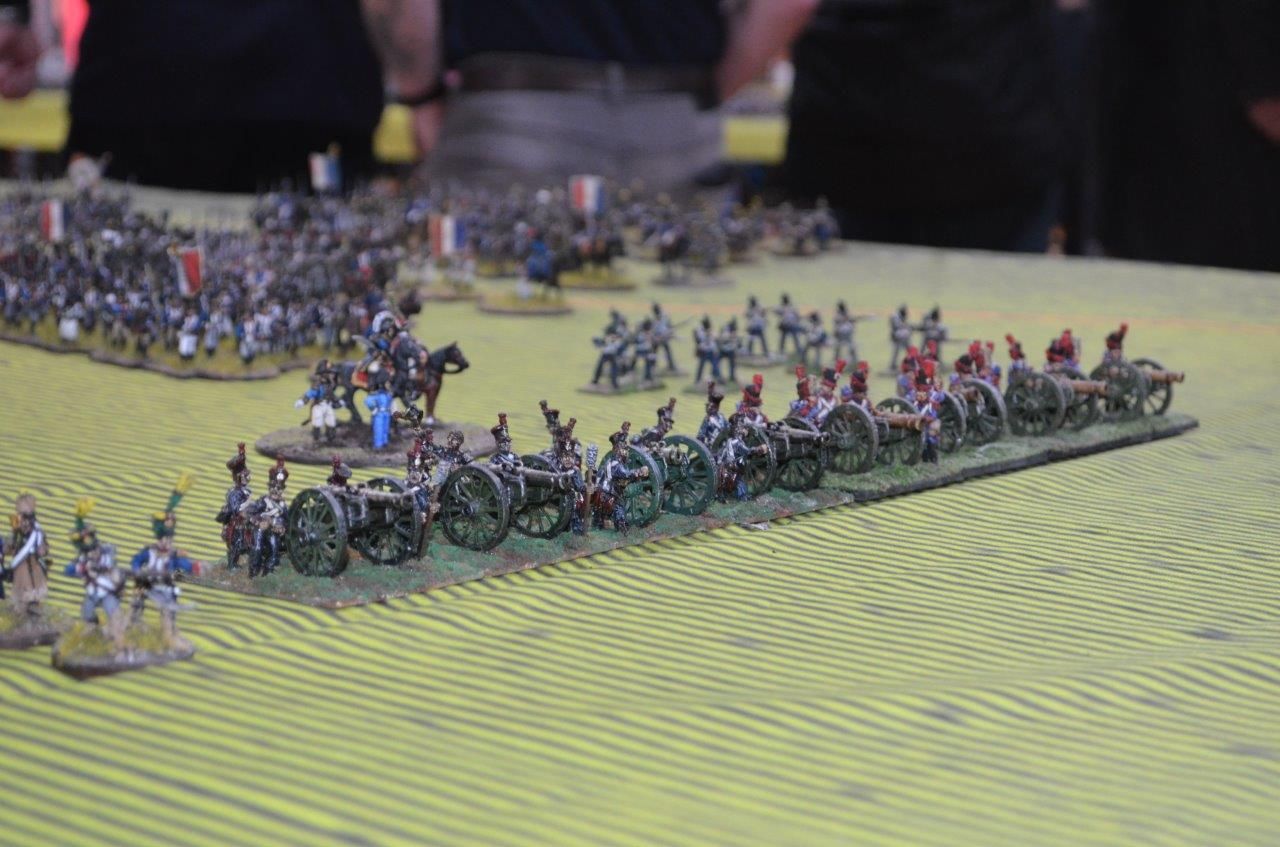
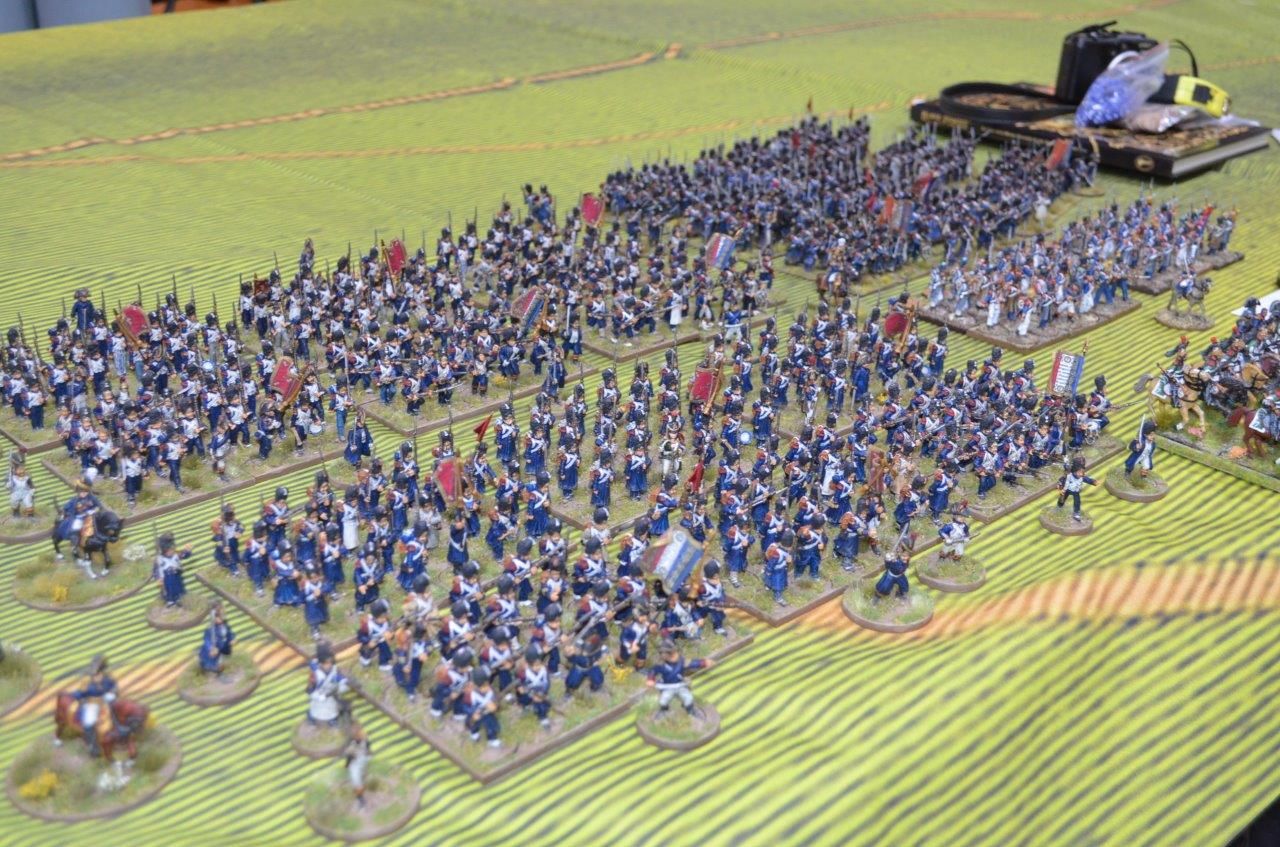
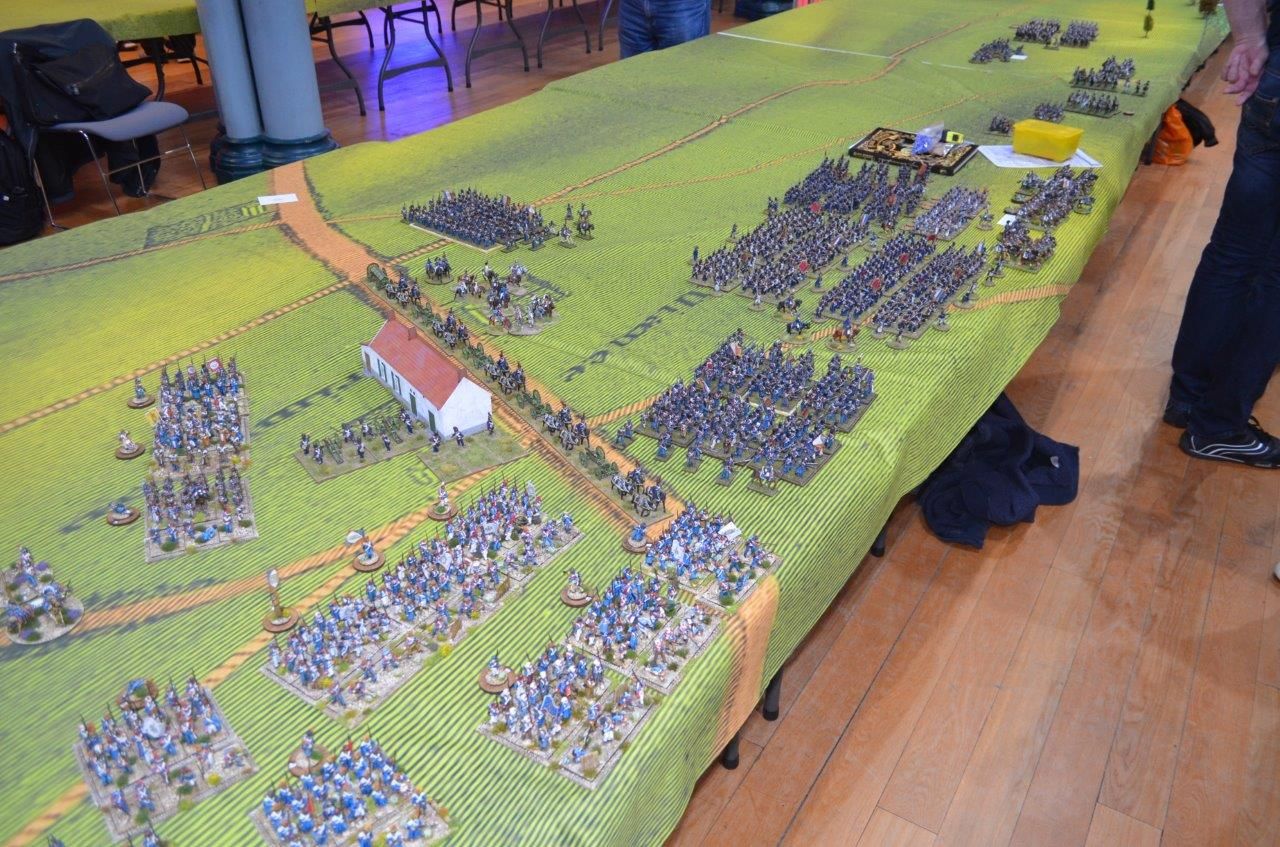
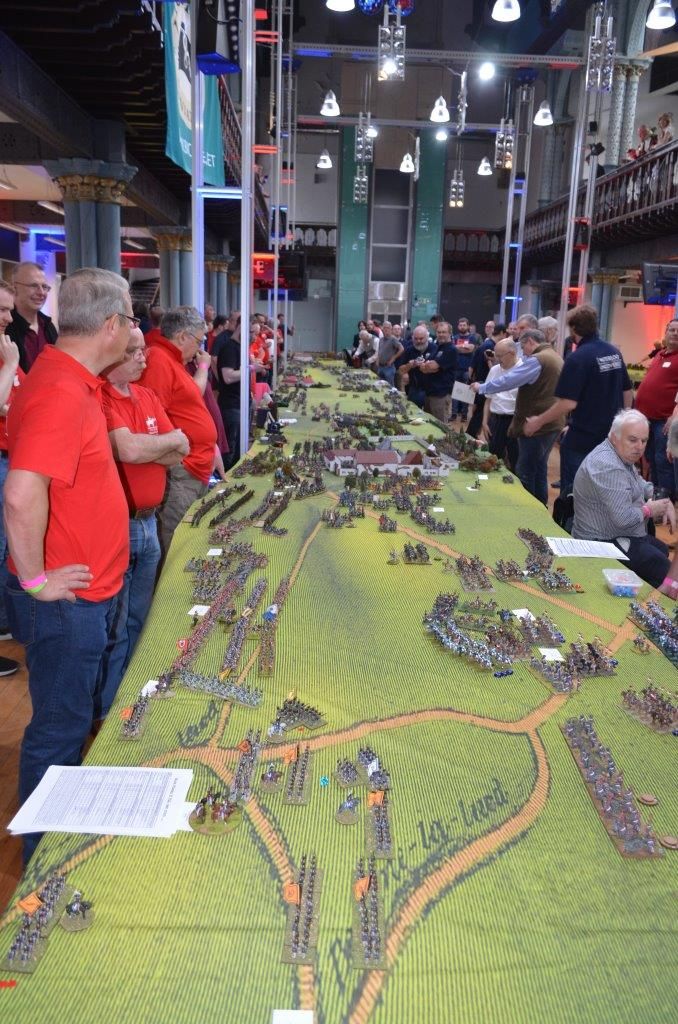


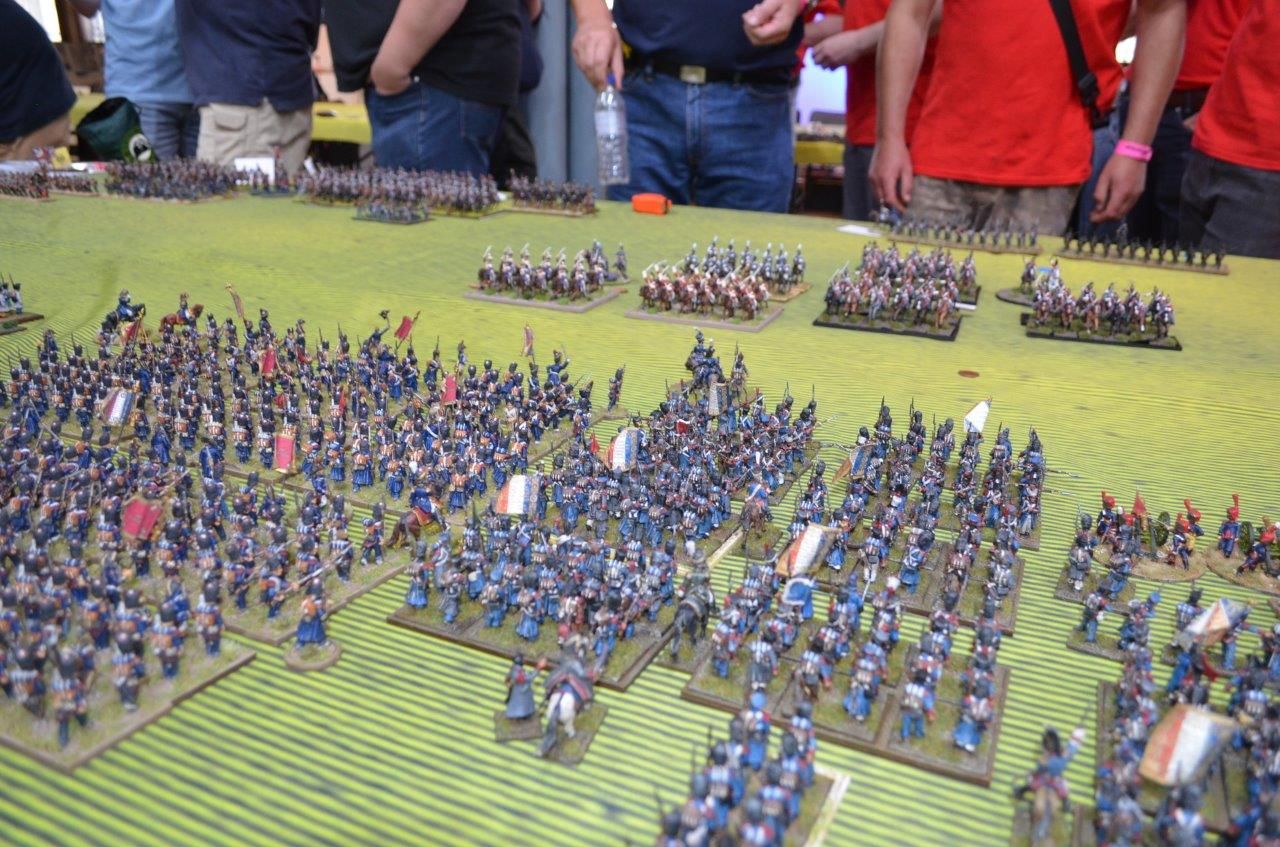

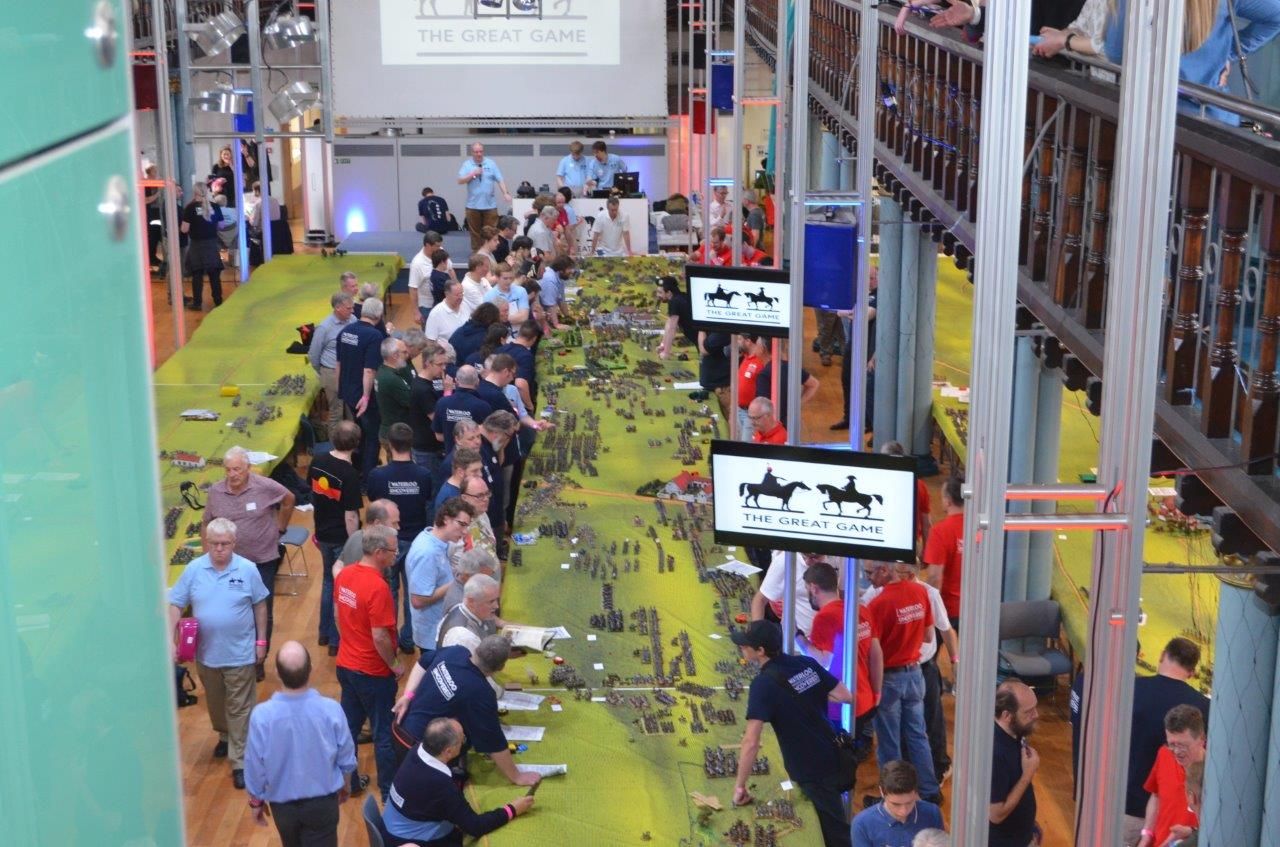
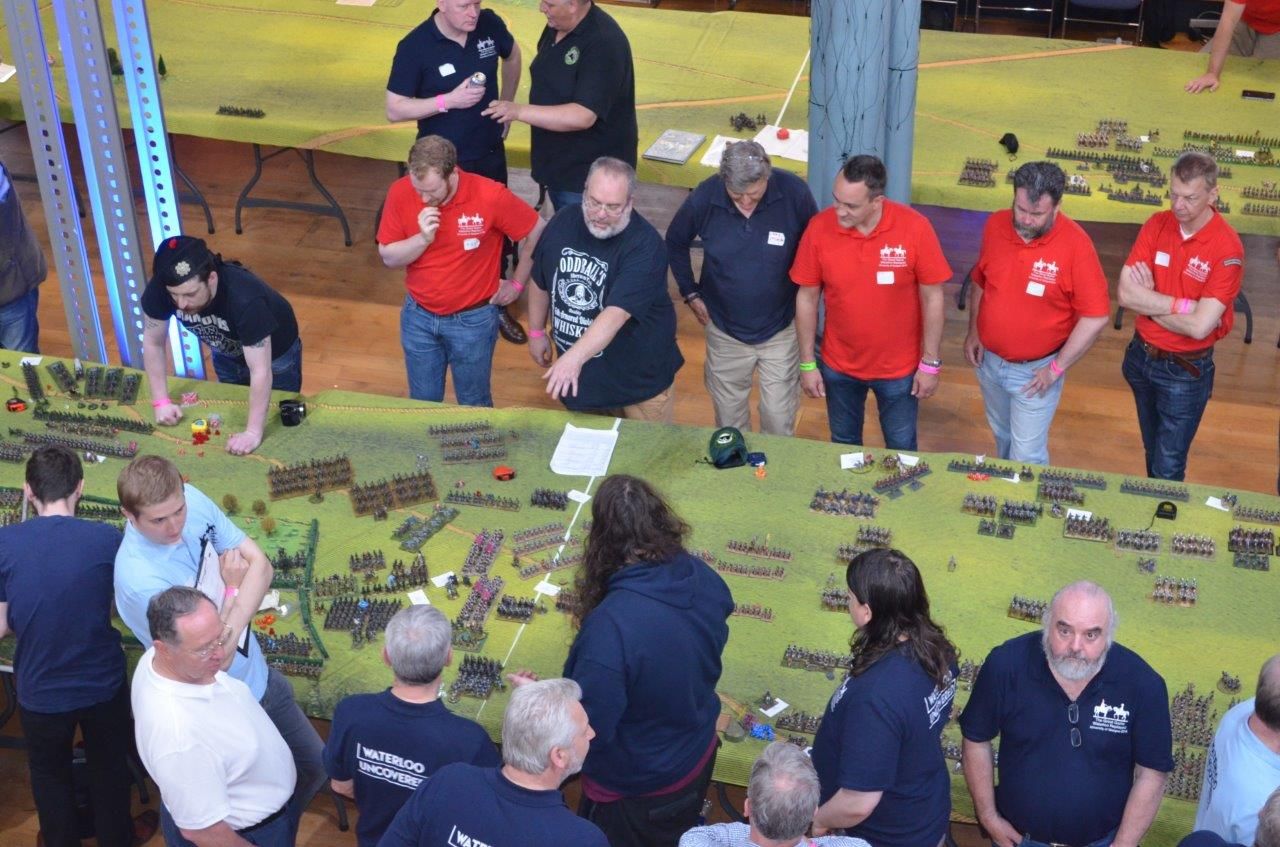
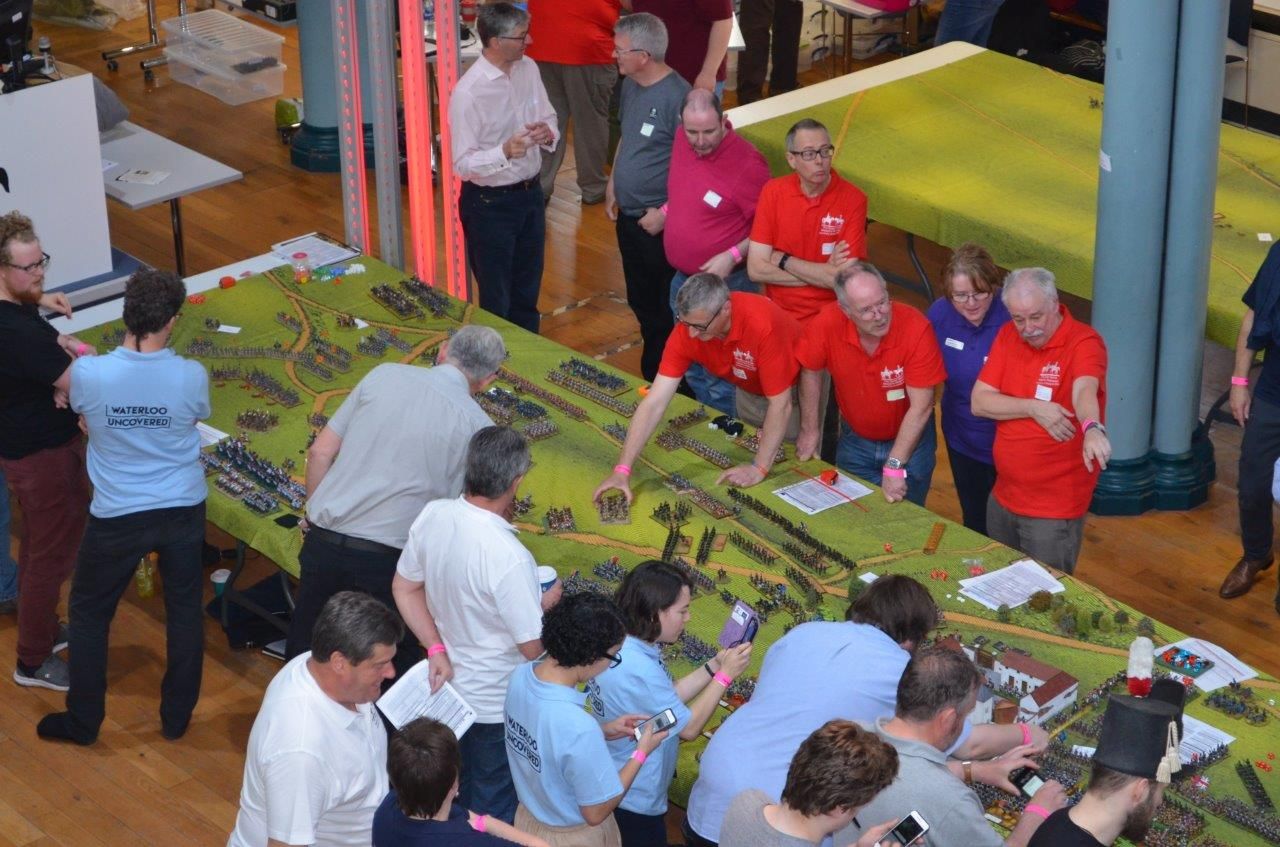
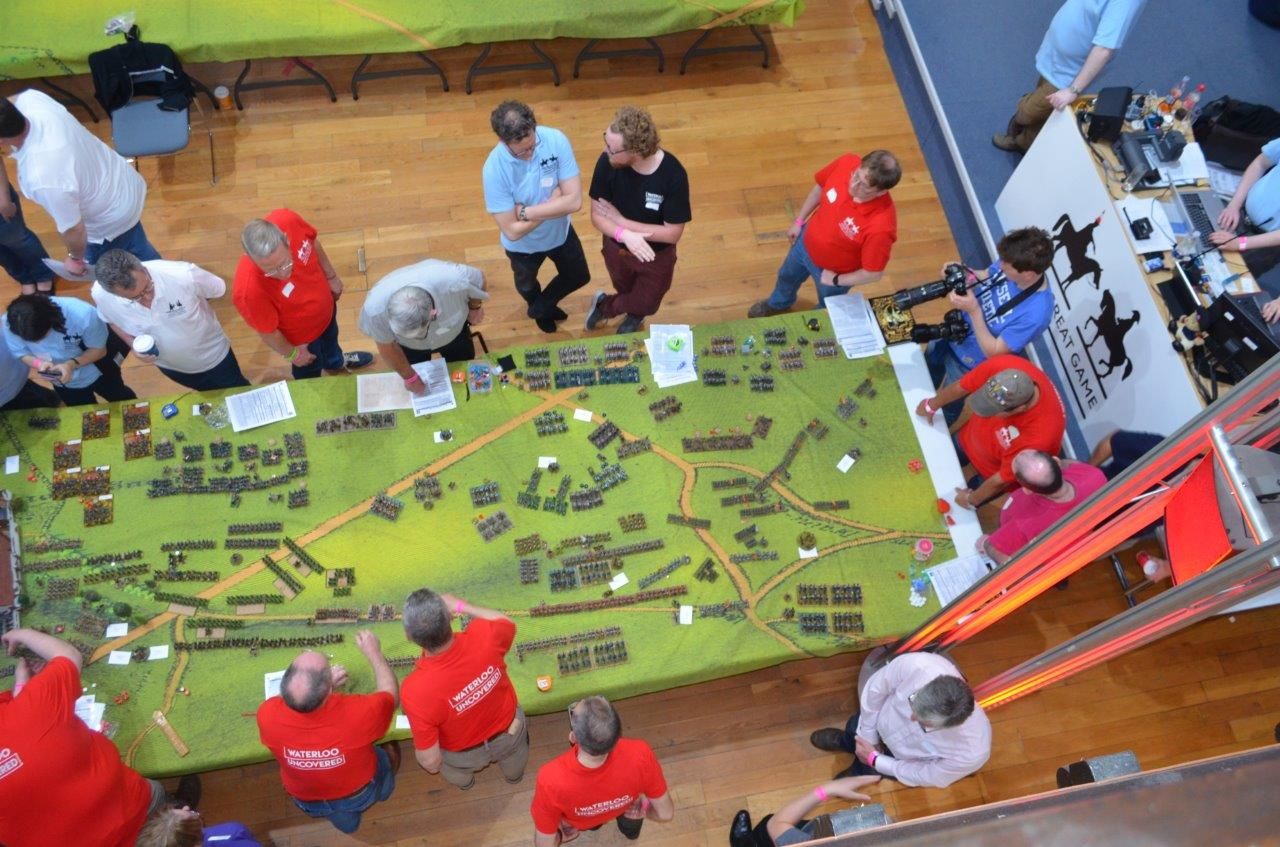


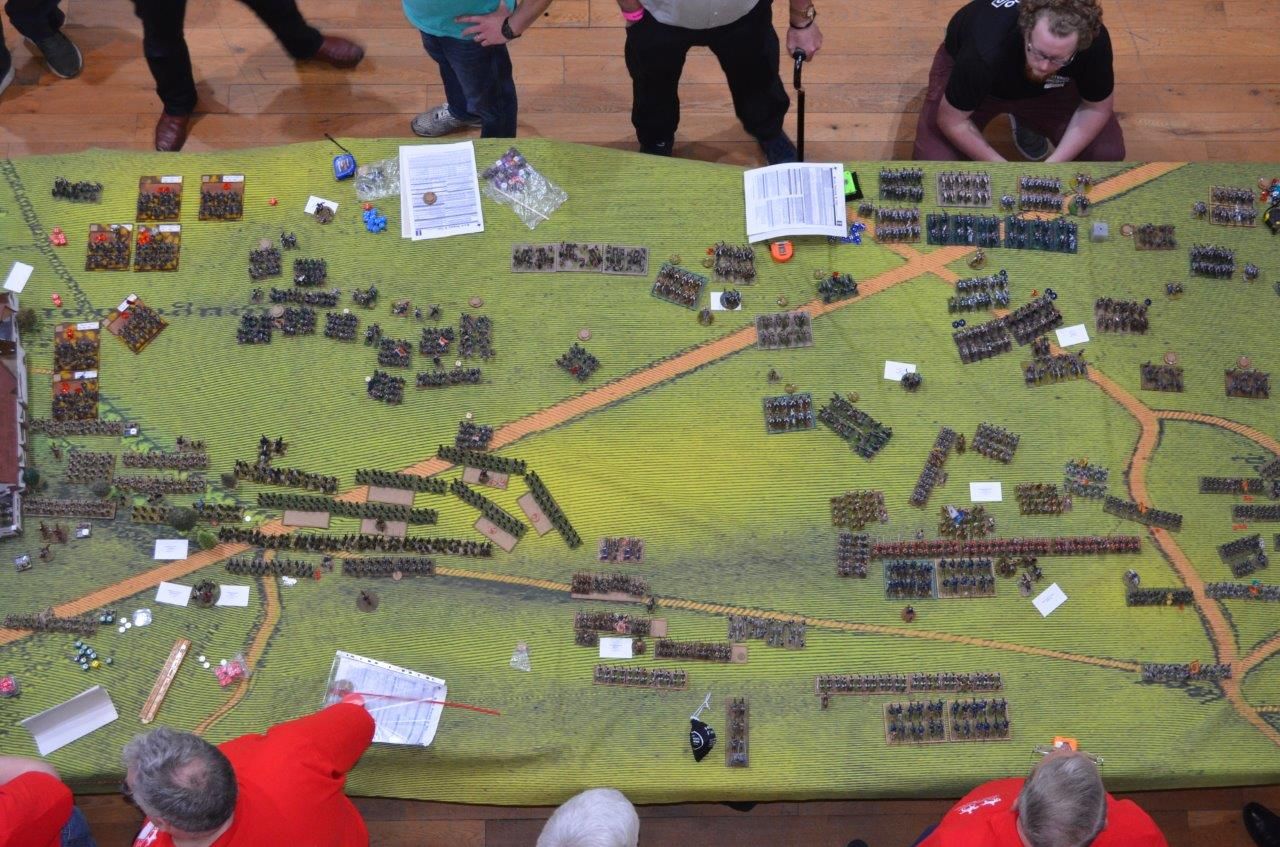

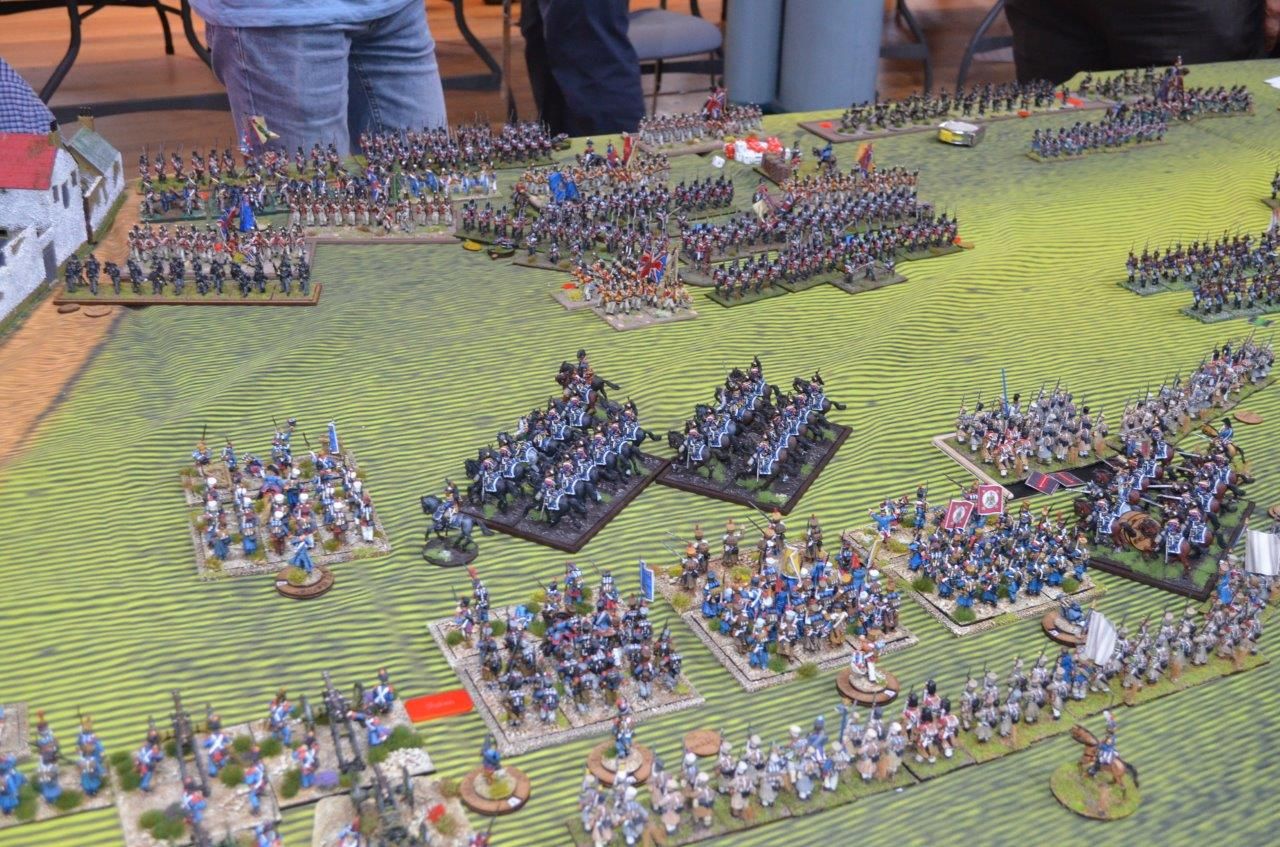
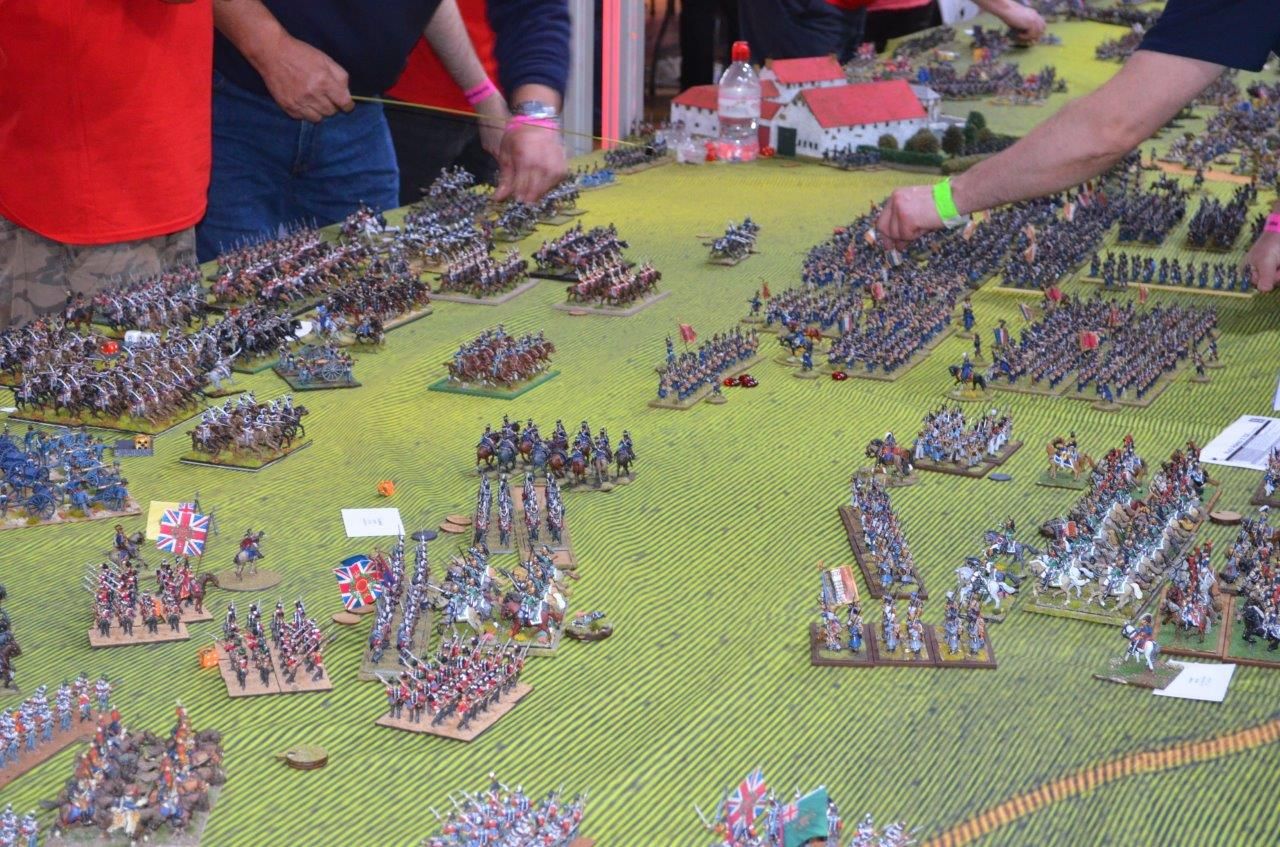
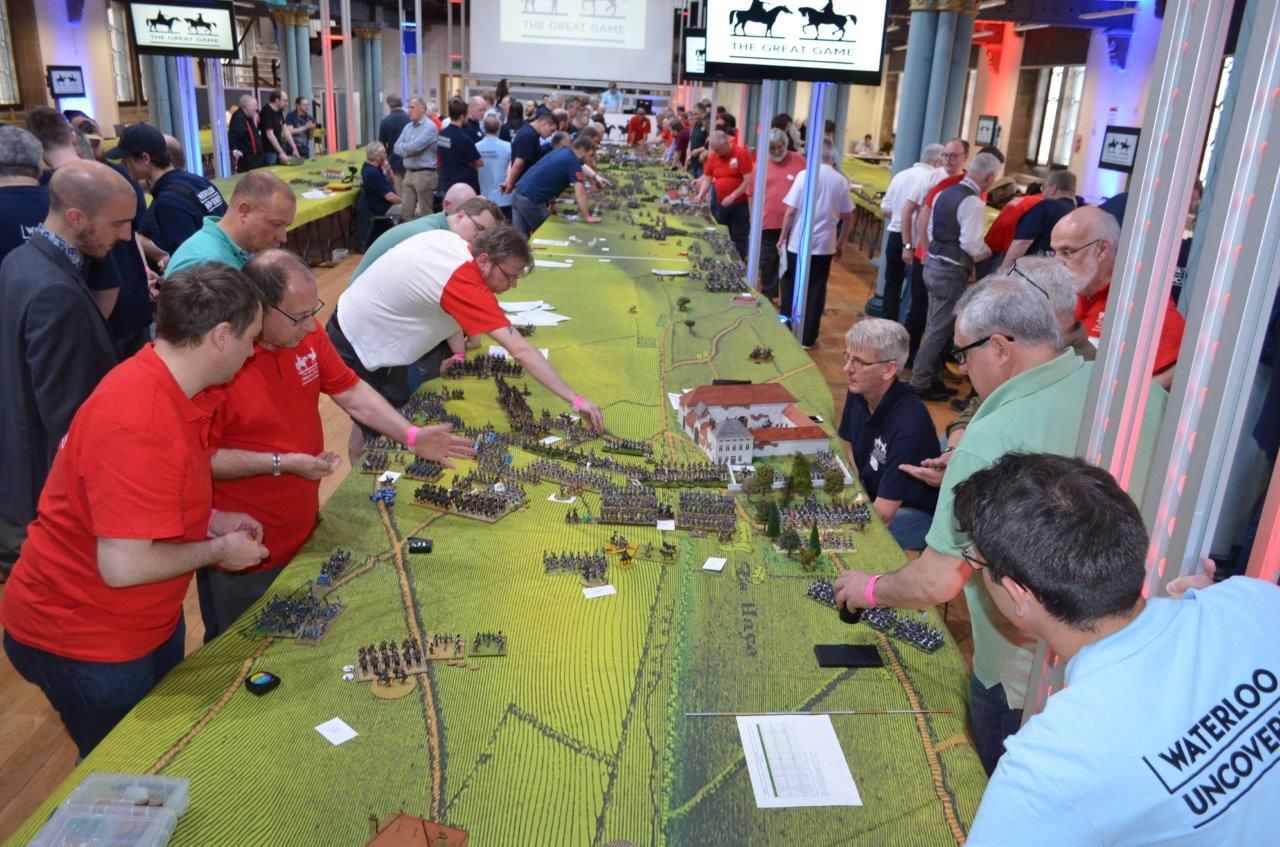
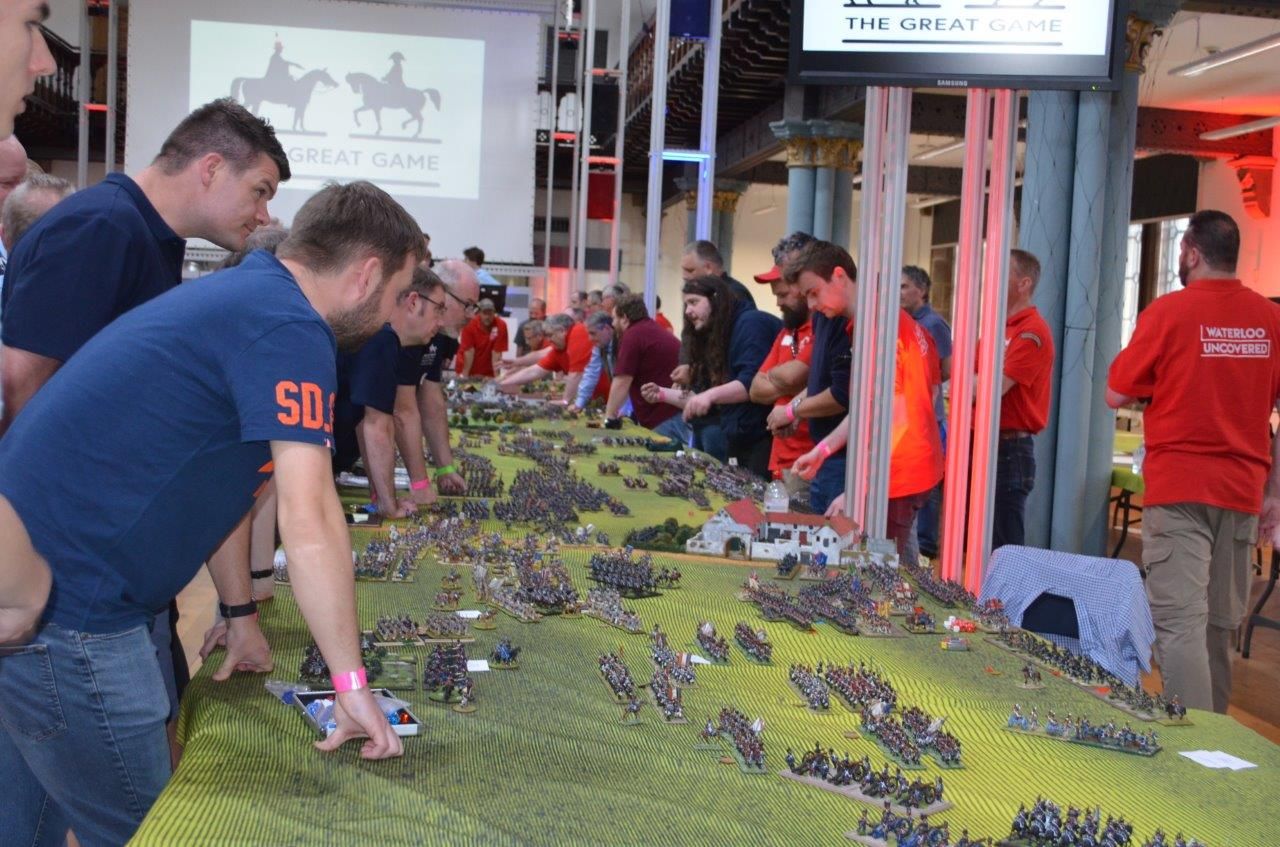


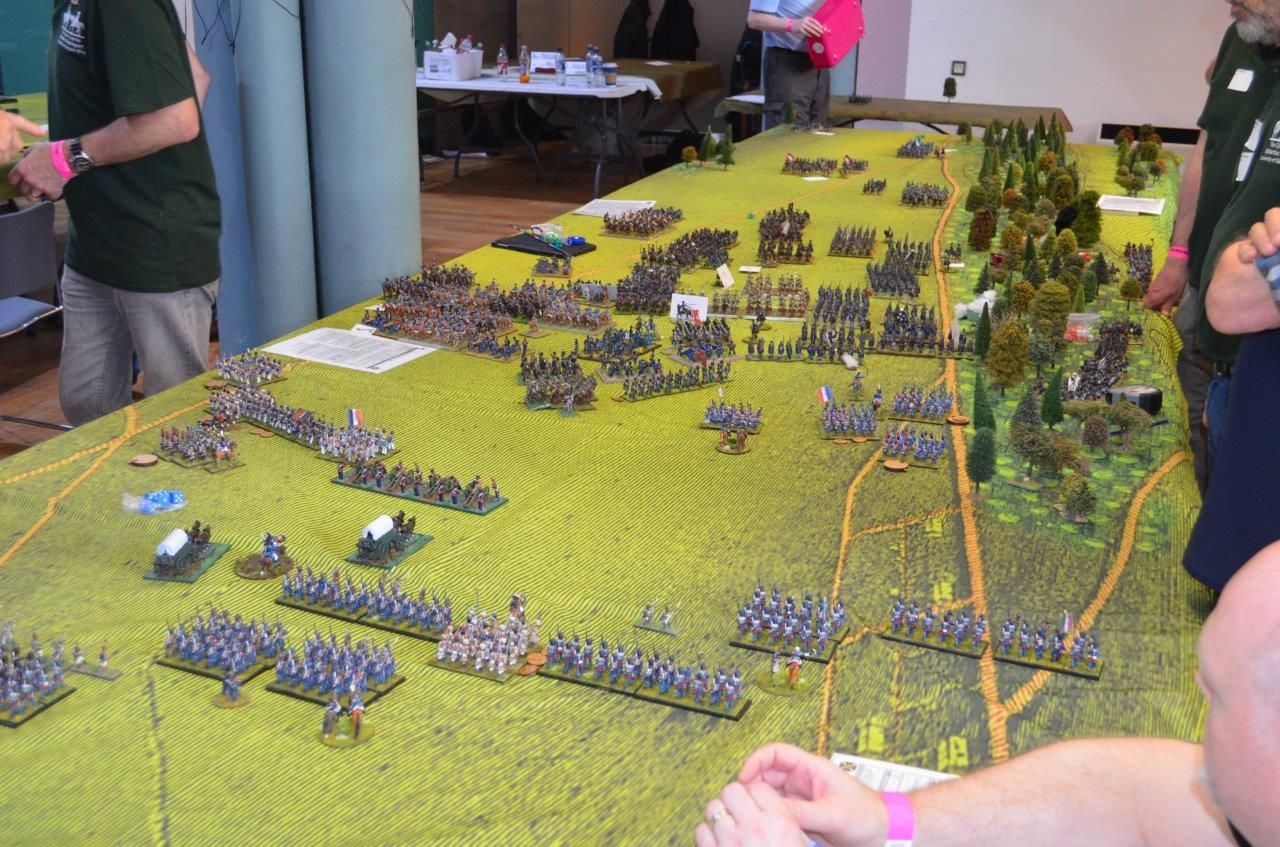
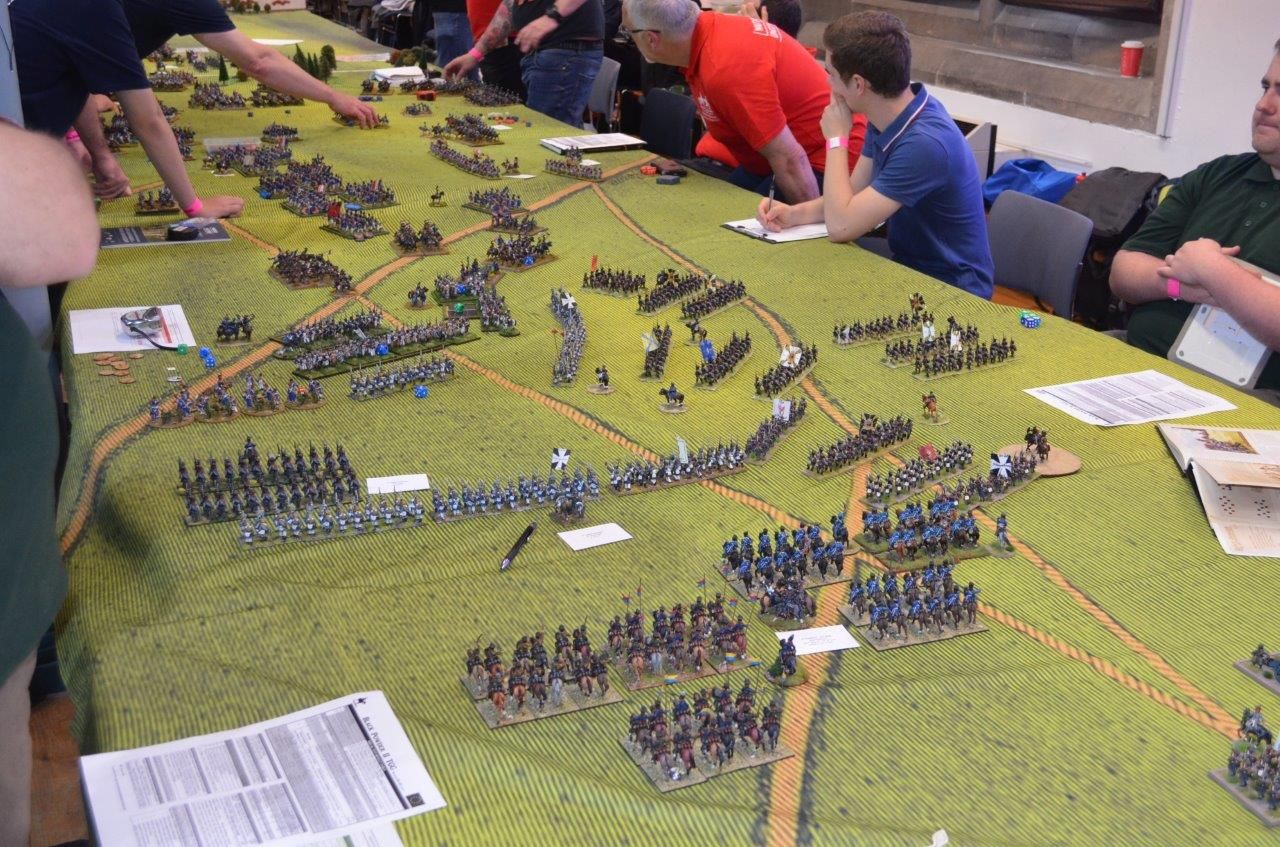
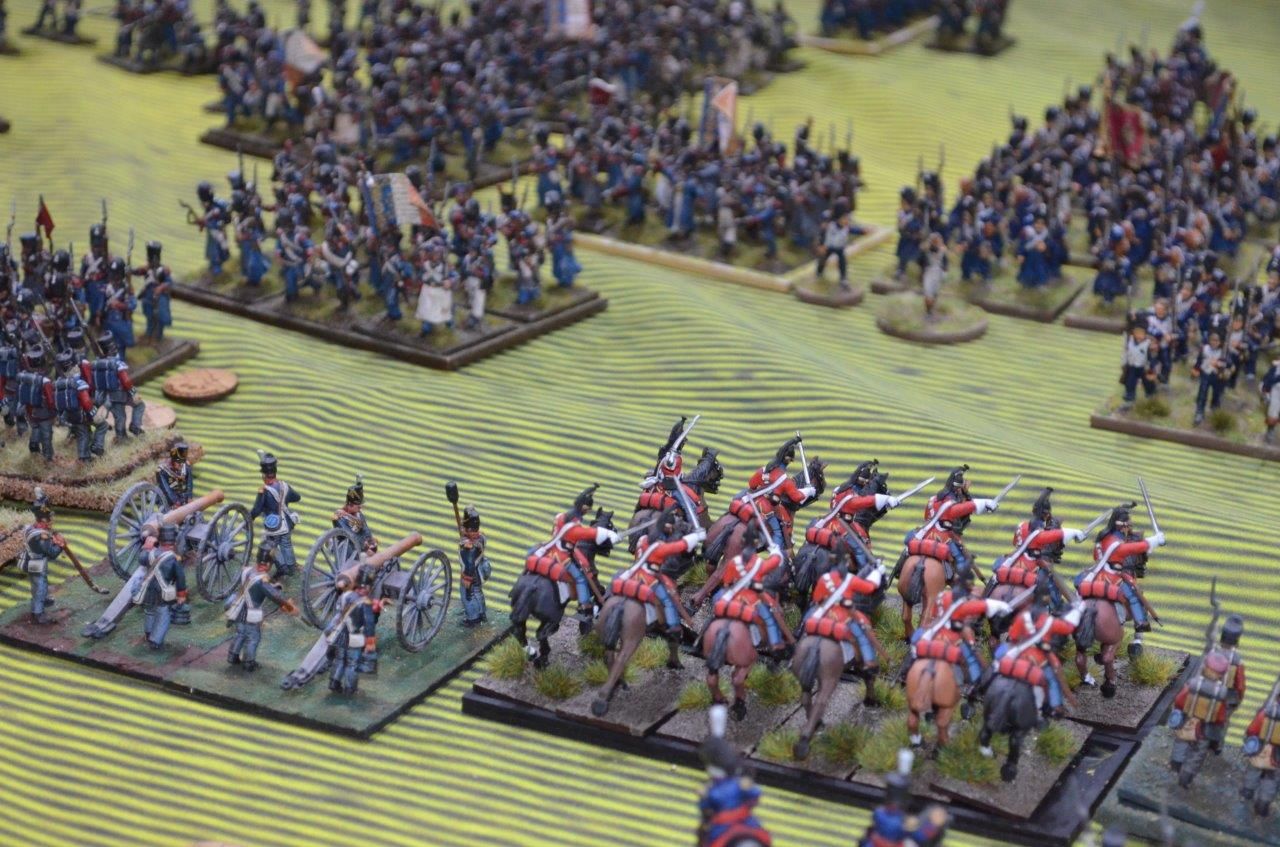

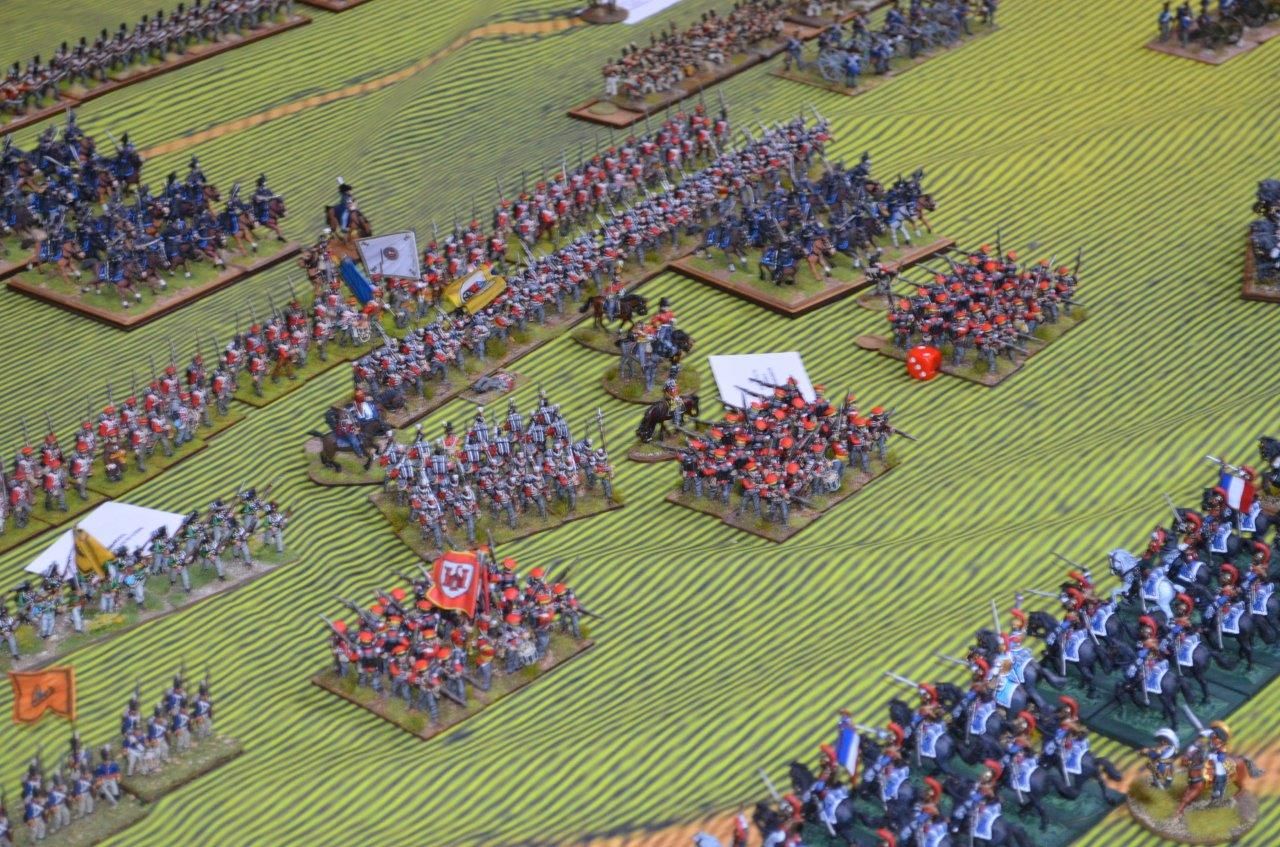
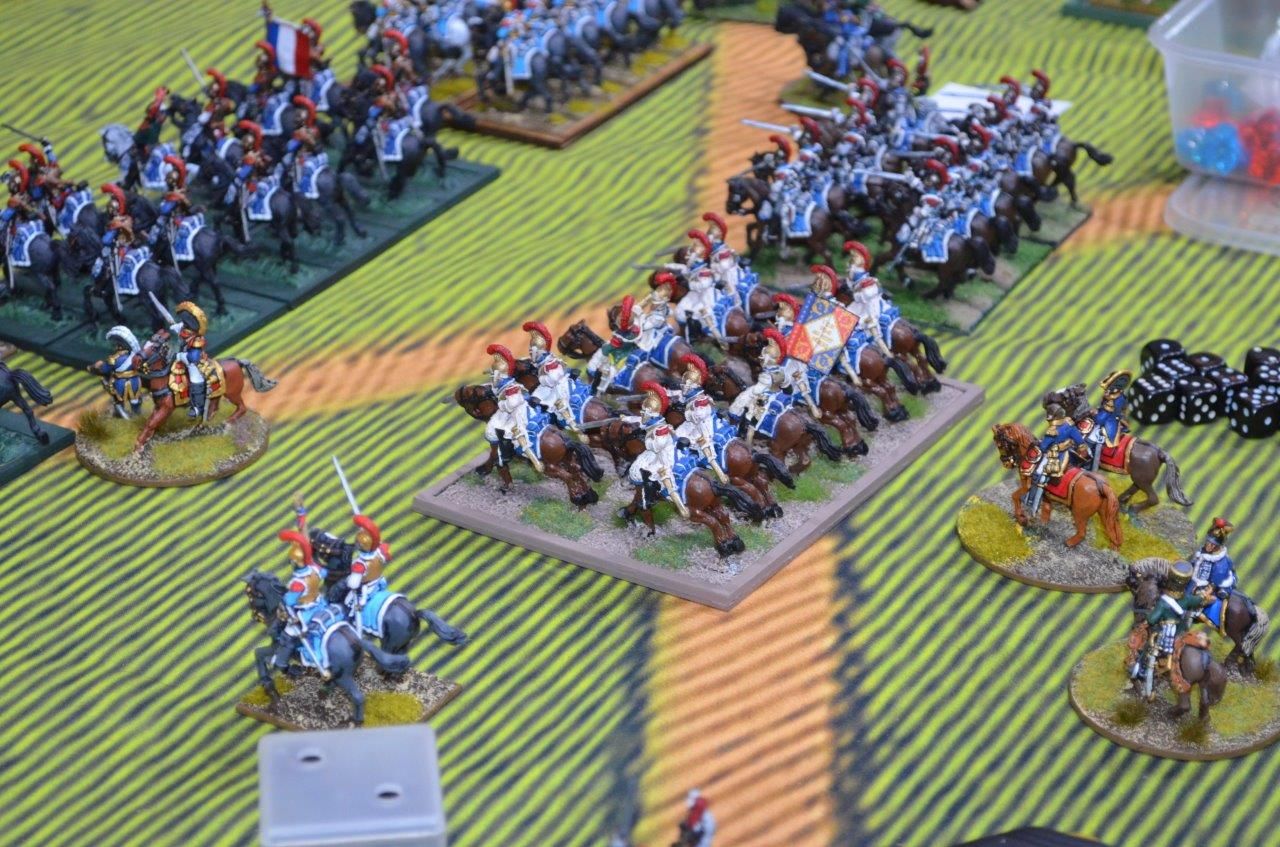
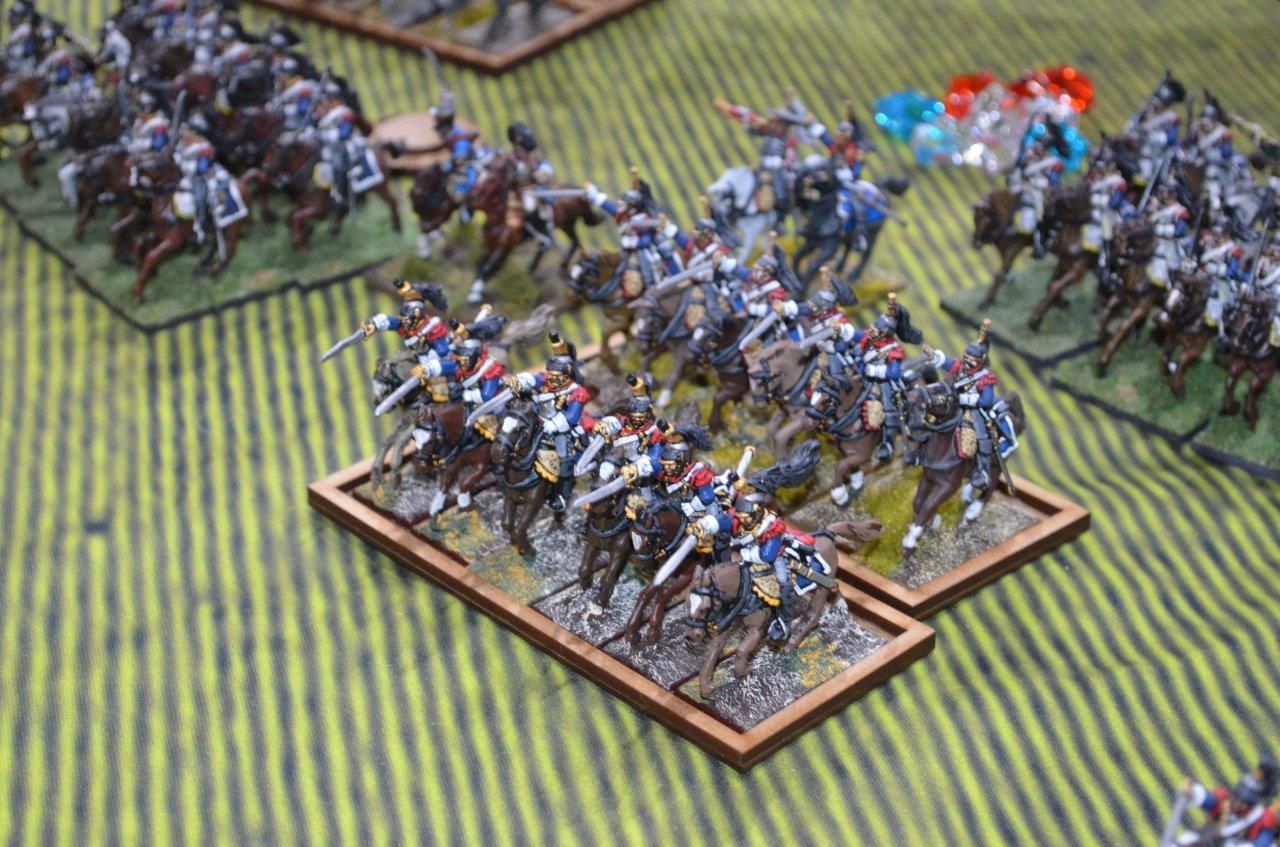
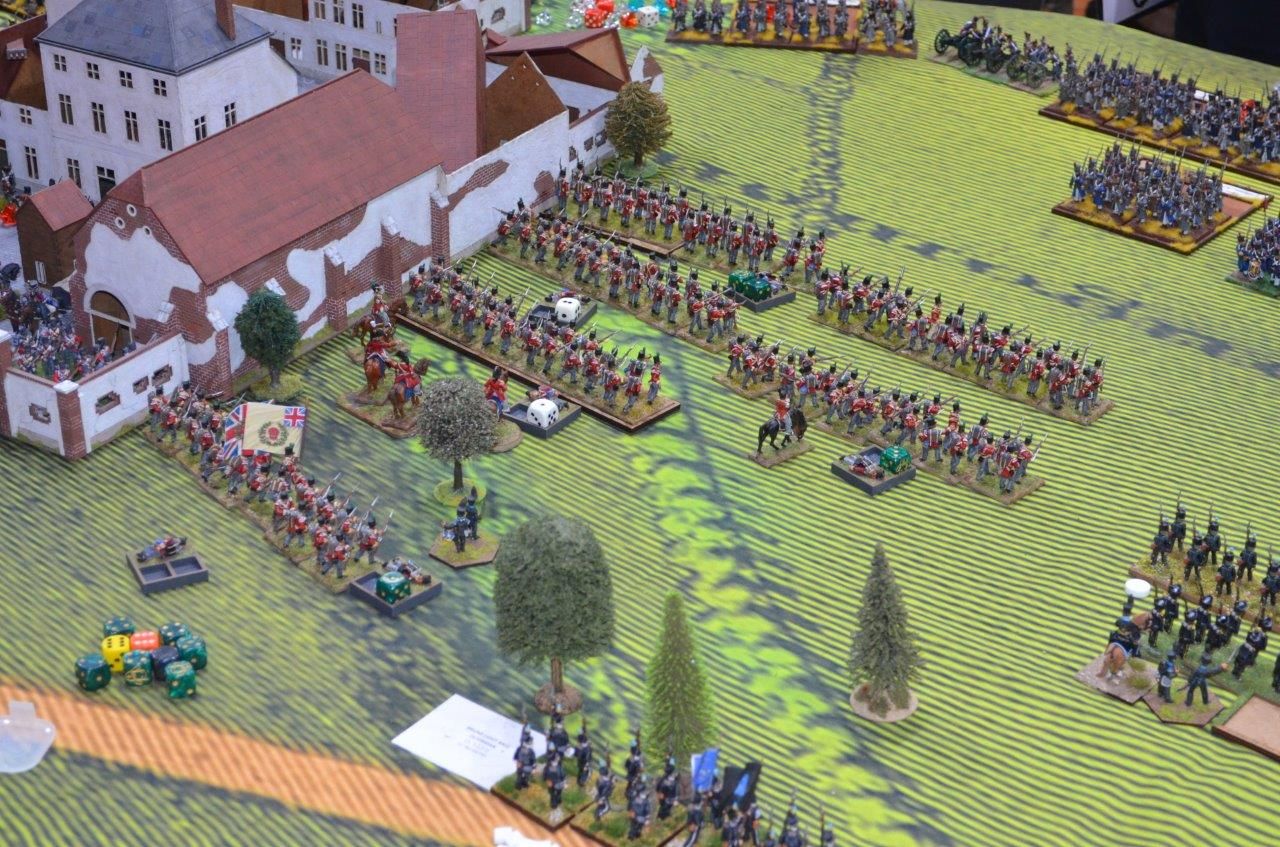
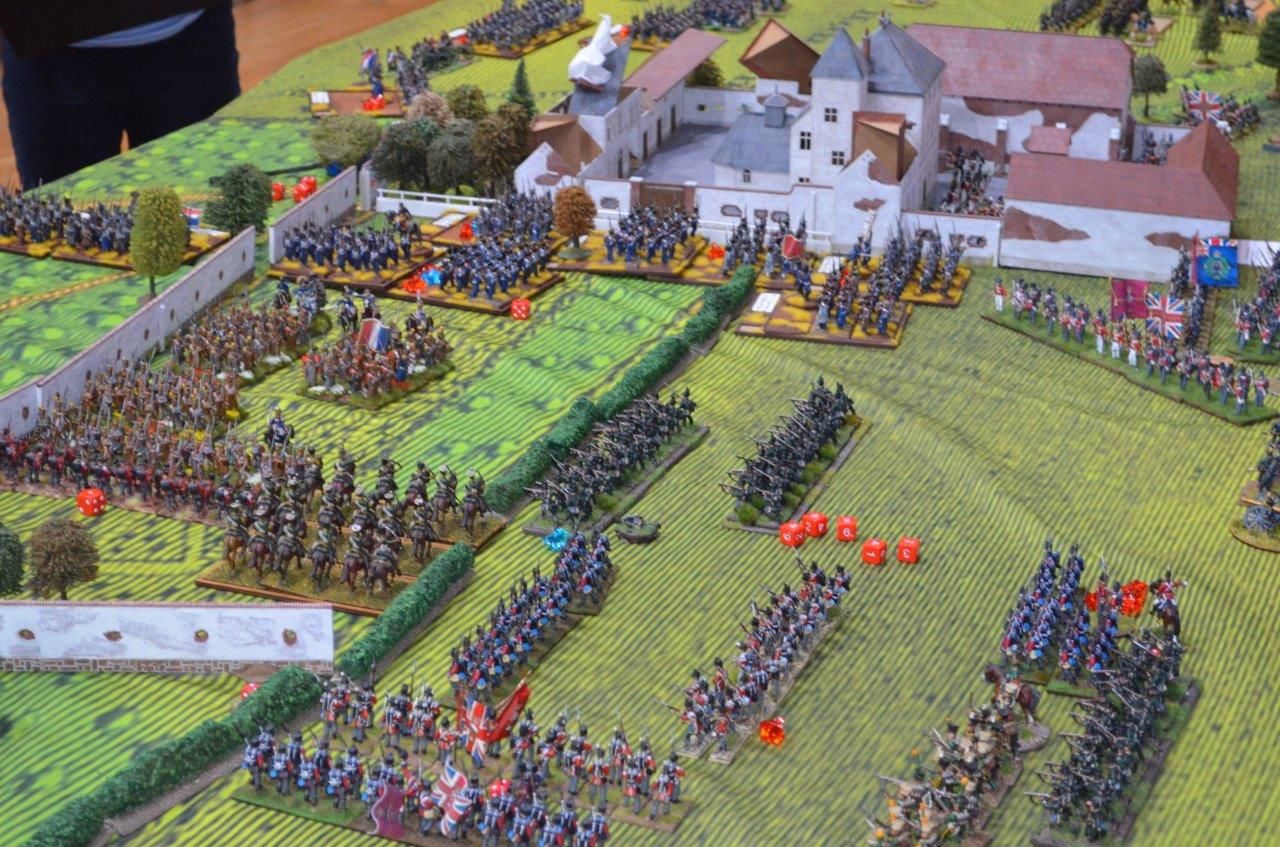

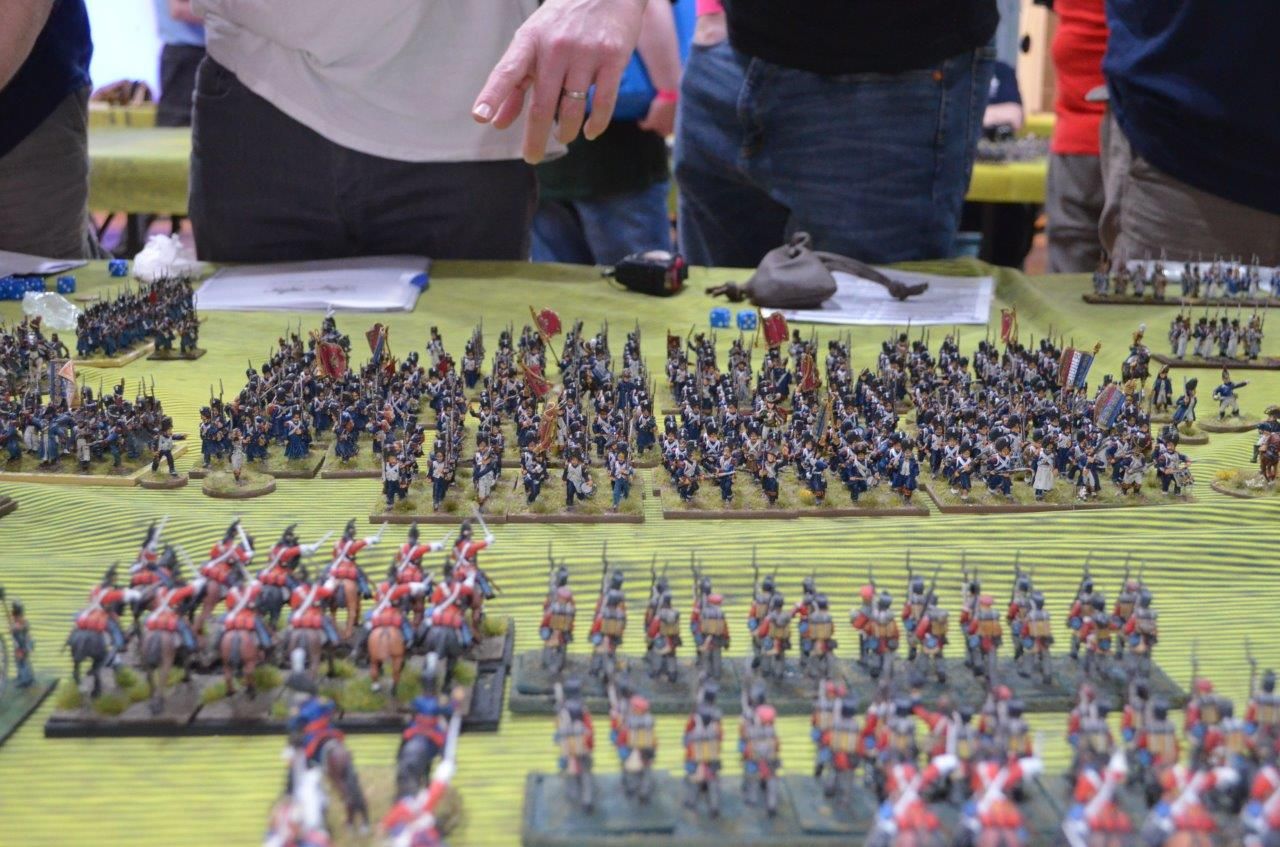

Thanks for sharing Eric, I managed to come as a spectator and it was a real spectacle. The scale of the task was immense but I agree a few thinks might have worked better, I assume the organisers probably thought about these in advance. Well done to all involved
ReplyDeleteThanks for such a fab collection of photographs and the insightful commentary - the behind the scenes work must have been tremendous.
ReplyDeletejust to share some of the thinking:
ReplyDelete1. Brigade Morale -- Every battalion (infantry) and regiment (cavalry) had three Black Powder units. The morale was applied at this level such that when two of the three units was broken (i.e. more than 50%) then the whole battalion was lifted off. It wasn't (or shouldn't have been) applied above this level. Effectively a battalion became the brigade -- and each battalion had a colonel (which acted as a 'brigadier' in Black Powder terms).
2. Siborne's map, which formed the mat had to be stretched because of three reasons . The implications of this were very carefully considered. Firstly, the footprint of the units would not have fitted in if the historical set up (a key feature) was to be maintained -- this was particularly the case with the Allies in line. This was carefully mapped in scale many months beforehand. Secondly with a large number of wargamers in the aisles, we needed sufficient table frontage per wargamer to make the week-end experience a pleasant one. Thirdly we had a to work within the constraints of a 19th century hall with many pillars, and set dimensions.
The main implications for this concerned the Prussians. On this side we used a random dicing method for Prussian arrival which allowed them to arrive slightly early if they were lucky (brigade by brigade) with a fall back time for general arrival. This also kept the French, who had the benefit of hindsight, somewhat guessing. On IV Corps front, the one tweak we made to the 11.00 historical set up was to start their French opponents (VI Corps) to the east of where they were in history. This allowed contact to be fully made before the end of the Saturday or about 3 pm in battle time. On 1 Corps front, we were perhaps fortunate that the French breakthrough was around Papelotte and not further west. This allowed the Prussians to play a significant part and sealing off the French ingress on the Sunday, and with other Prussians threatening their rear this caused the French to halt and eventually retire in this sector.
Overall the surprising thing to me was how historically the Great Game played. Certainly there was a degree of fortune about this, combined with players making the same errors as in 1815. However I would like to think that this is also testimony to the amount of planning, play testing and thought that went into the design.
Let it also be said that the common-sense of the corps of Umpires was also a key factor!
What an achievement! Congratulations to all concerned.
ReplyDeleteThe mind boggles at the organisation involved.
For me the interesting part is your final paragraph. Honest reflection is so important & tweaking rules can have unforeseen consequences just as radically up scaling a rule set can upset the internal balance when they are really written for far smaller tabletops.
Vitally and most importantly everyone had bucket loads of fun!
Very best wishes,
Jeremy
Brilliant photos, a great report, and some valid observations on the game - though, as Donald says, the pragmatics of creating a massive but enjoyable game seem somewhat to interfere with playability and, to some extent, historical plausibility. I think you're right about distances, especially artillery ranges. Maybe some revisionism next time??
ReplyDeleteIt was a fantastic event and good to meet you, the other umpires and everyone involved. Look forward to the WI article.
Best coverage of the event I have seen so far - thank you.
ReplyDeleteDid anyone think of approaching "Really Useful Boxes" for sponsorship!
A very interesting report - thanks!
ReplyDeleteIt's a completely different perspective from my experience as a spectator. Looking down from the galleries the main issue was that we had no idea what was happening down below...
it does look completely confusing , i wonder how wellington and boney knew what was going on .
DeleteGreat pics, and what a great opportunity to act as an umpire and well done for stepping up to the task. It’s quite a spectacle and probably a once in a lifetime game. 😀
ReplyDeletethe broken rule seems to have been somewhat confused then ... and there must have been a hell of a lot of commands which each battalion being the eq of a brigade .
ReplyDeleteHow did the command and control work / how were battalion cdrs reporting to brigades and brigades to divisions . How were higher orders being issued or was it a free for all . How did nap and wellington know what was going on and how did they pass on orders to there lesser mortals ?
Wow! That looked absolutely spectacular!!
ReplyDeleteIt was lovely game and I was happy to umpire it. I also been captured by you on one of the pictures (15th from he top - guy in white, it is me).
ReplyDeleteThank You For This Article!
ReplyDeleteIt is very enjoyable & Useful
TECHNOXMART